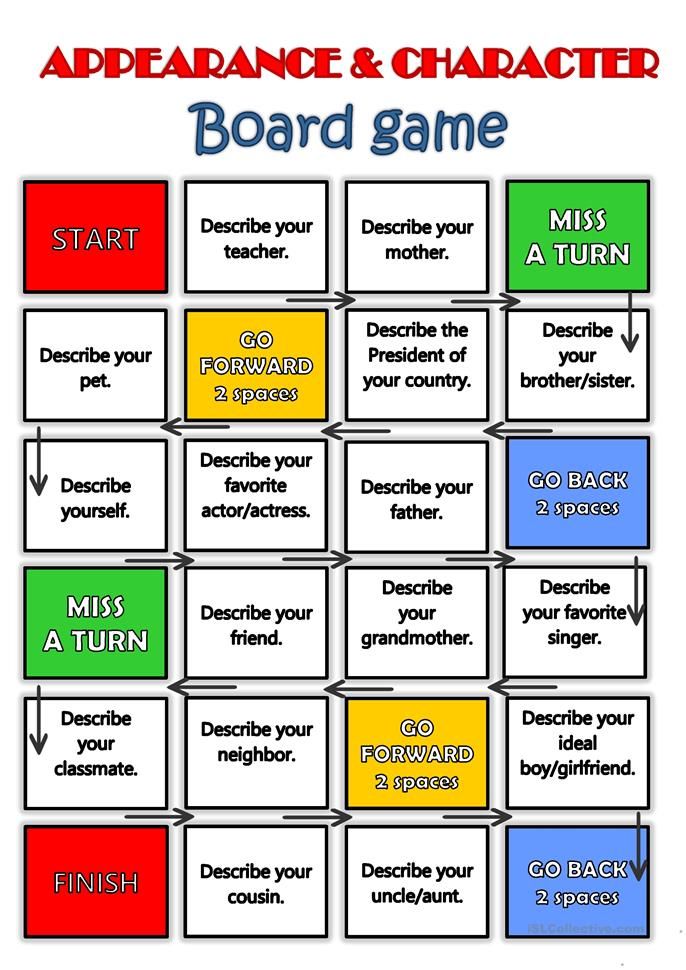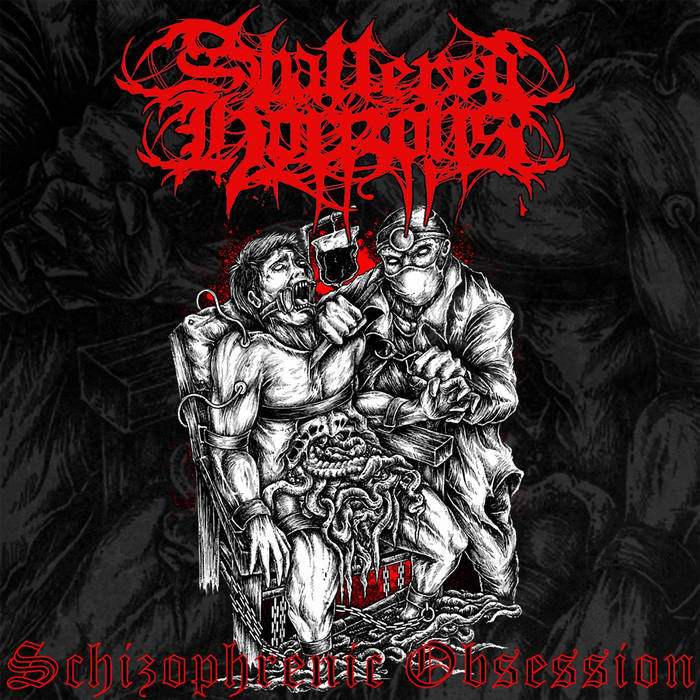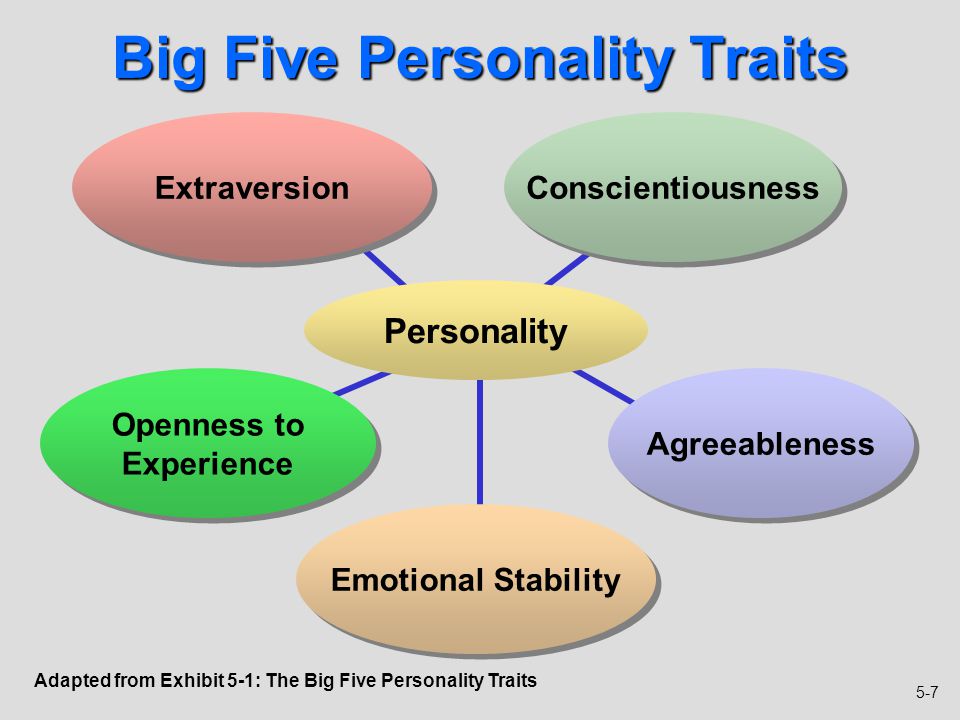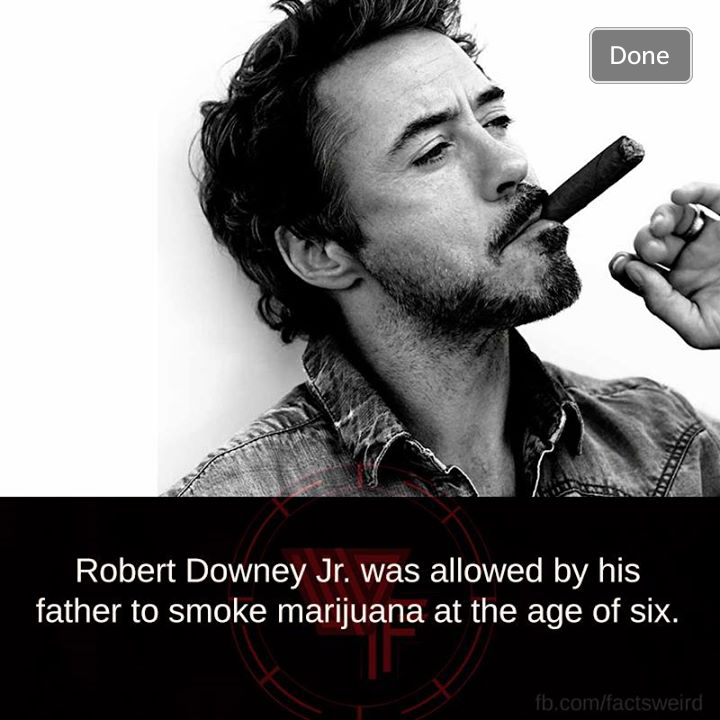Craig childress parental alienation
Parent Resources | Dr Craig Childress
Skip to contentPrevious Next
Parent Resources
These are resources for parents.
This is an essay describing the pathology, its diagnosis and treatment
- Attachment Pathology in the Family Courts Essay – 7-15-21
- The Narcissistic Parent
This booklet is written for parent to provide to their involved legal professionals and mental health professionals. It is structured around direct quotes from the professional literature.
- Professional Consultation
This booklet is written at a professional-level for parents to provide to their involved mental health professional. It specifically alerts the mental health professional to their ethical obligations.
- Assessment of Attachment-Related Pathology Surrounding Divorce
This booklet is written for parents and their legal counsel to provide to involved mental health professionals and the court when seeking a treatment-focused clinical psychology assessment of the family pathology. It describes the type of assessment protocol sought.
- Contingent Visitation Schedule
This booklet is written for parents and their legal counsel to provide to involved mental health professionals and the court when seeking a Strategic family systems treatment plan for the family conflict in lieu of a protective separation for Child Psychological Abuse.
DSM-5 Dagnostic Formulations from
Foundations. (Childress, 2015, p. 312-313).This is the DSM-5 diagnostic formulation for an attachment-based model of “parental alienation” as described in the book, Foundations. Parents can provide this handout from Foundations to their involved mental health professional.
- DSM-5 Dagnostic Formulations from Foundations (Chldress, 2015)
In the world of school-based psychology, parent advocacy for special education services is a long-established fact. The world of school-based psychology has developed the strocng capacity for parent advocacy.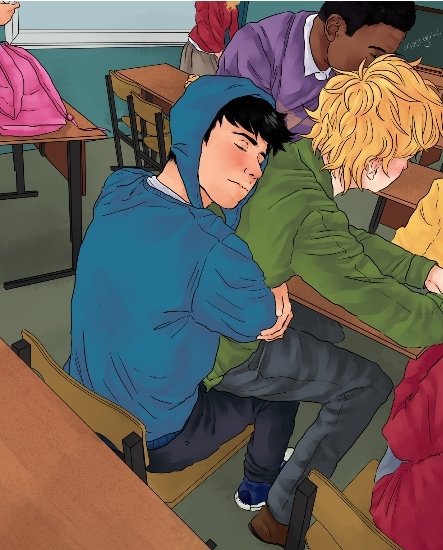
The skill sets needed are identical to court-involved pathology, the content is different. Over in the school-based psychology, the institutional barrier are the schools, in court-involved attachment pathology, the institutional barriers are the courts and forensic psychology.
These are helpful handouts from school-based psychology (Wrightslaw) that are helpful guides for developing parental advocacy in court-involved family conflict. Switch content, apply principles.
- Advocating for Your Child – Wrightslaw
- Letter to a Stranger – Wrightslaw
These are professional-level reference lists that parents can provide to their involved mental health professional regarding aspects of this pathology. The Psychological Control reference list might be helpful, and the Dark Triad references list is often appropriate for this high-intensity family conflict pathology.
The Reference List for AB-PA is my personal reference list from 2015 surrounding Foundations. If anyone asks for “peer-reviewed research” for AB-PA, this reference list is the appropriate response, this is the peer-reviewed research for an attachment-based description of “parental alienation” pathology surrounding divorce.
If anyone asks for “peer-reviewed research” for AB-PA, this reference list is the appropriate response, this is the peer-reviewed research for an attachment-based description of “parental alienation” pathology surrounding divorce.
- Reference List for AB-PA
This is the personal reference list of Dr. Childress for AB-PA. Note the quotes from the relevant literature, reading these direct quotes is a good way for a mental health professional to become oriented to the scope of the pathology.
All mental health professionals treating this pathology should have read all of the material on this Reference list for professional competence. Ignorance is not acceptable professional practice.
- Psychological Control References
- Psychological Control – Barber and Harmon Citations
This is a reference list regarding the construct of parental psychological control of the child and the table from Barber & Harmon listing citations of research for the construct of psychological control.
- Dark Triad Reference List
This is a reference list regarding the Dark Triad personality.
Regarding Family Therapy (Childress, nd)
This is a professional-to-professional consultation letter to the family therapist discussing treatment approaches for AB-PA pathology.
- Professonal-to-Professional Consultation Letter – Family Therapy for AB-PA (Childress, nd)
Professional-to-Professional Consultation Handout (Childress, nd)
This is a handout for parents to provide to their involved mental health professional explaining the pathology.
- Professional-to-Professional Consultation Handout (Childress, nd)
Letter of Diagnostic Concern: Hostile-Rejecting Child:
This is a letter for parents to provide to their involved mental health professional explaining the pathology surrounding the hostile-rejecting child.
- Professional-to-Professional Letter of Diagnostic Concern (Hostile-Rejecting Child)
Letter of Diagnostic Concern: Anxious Child
This is a letter for parents to provide to their involved mental health professional explaining the pathology surrounding the anxious child.
- Professional-to-Professional Letter of Diagnostic Concern (Anxious Child)
Professional Consultation Booklet Introduction
This is the introduction to my booklet, Professional Consultation. This booklet is written for parents to provide to their involved mental healtlh therapist.
- Professional Consultation Booklet Introduction
Email Advice to a Parent Regarding Diagnosis (Childress, nd)
This is a response to a parent’s email requesting advice on assessment and diagnosis of AB-PA (“parental alienation”).
- Email Advice to a Parent on Diagnosis (Childress, nd)
Position Statement On Supervised Visitation (Childress, 2020)
This initially appeard as a Facebook post to the Alliance to Solve Parental Alienation. Parents requested a formal hardcopy of the post.
- Supervision Position Statement of Dr. Childress (2020)
Symptom Rating Request Letters
The first letter is one I began writing and providing to parents because their involved mental heath people are refusing to provide information to parents regarding the child’s symptom display.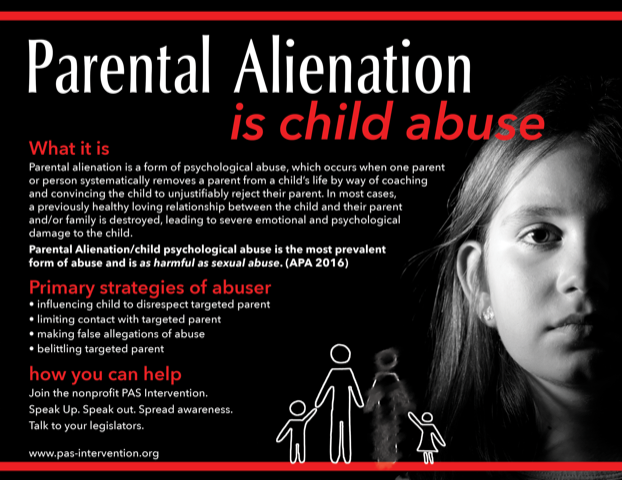 The second letter is the same time of letter addressed to the court.
The second letter is the same time of letter addressed to the court.
- Symptom Rating Request Letter (Childress, nd)
- Symptom Rating Request Letter to the Court (Childress, 2018)
Child Testimony: Chapter from The Narcissistic Parent (Childress, 2016, p. 34-37)
This is the Chapter from The Narcissistic Parent: A Guidebook for Legal Professionals Working with Families in High Conflict Divorce.
- Child Testimony – Chapter from The Narcissistic Parent (Childress, 2016)
Narcissistic Pathology: Quotes Handout
I gave a presentation on the narcissistic personality. This is the handout of professional quotes I provided.
- Narcissistic Pathology – Quotes Handout
Silence is Complicity in Child Abuse
This is an essay I wrote extending responsibility to the professional organizations that remain silent regarding the rampant and unchecked violations to the APA ethics code, and about the rampant and unchecked psychological abuse of children.
- Silence is Complicity in Child Abuse (Childress, 2017)
- Child Psychological Abuse – Legislative Changes to Child Abuse Reporting Laws
Pathogenic Parenting and the Attachment System: Question & Answer Format (Childress, 2012)
This is an early general handout to educate about the attachment system and the pathology of “parental alienation” (pathogenic parenting).
- Pathogenic Parenting and the Attachment System- Qustion & Answer Format (Childress, 2012)
Enmeshed Relationship: Question & Answer Format (Childress, 2012)
This is an early general handout to educate on the enmeshed relationship (psychological fusion)
- Enmeshed Relationship- Question & Answer Format (Childress, 2012)
Licensing Board Complaint Letter Template
This is an example template for the ethical code violations surrounding “parental alienation” pathology.
- Licensing Board Complaint Template Letter
Dr.
 Childress: Letters to the Child
Childress: Letters to the Child- Letter to Mary (Childress, nd)
This is a generic letter to a female child with a targeted parent mother.
- Letter to Jason (Childress, nd)
This is a generic letter to a male child with a targeted parent father.
- Letter to Jessica (Childress, nd)
This is a generic letter to a female child with a targeted parent father.
- Letter to John (Childress, nd)
This is a generic letter to a male child with a targeted parent father.
Professional Rationale for Protective Separation (Childress, nd)
This is my formal response to the question, “Is there research available that proves the statement that children, once removed from the alienating parent and placed with the targeted parent, recover soon?”
- Professional Rationale for Protective Separation Childress, nd)
Excerpt from an Initial Consultation Report for a Parent (Childress, nd)
This is an excerpt from an Initial Consultation report I wrote for a parent client (a father) regarding directions and his raising concerns about the mother’s new boyfriend.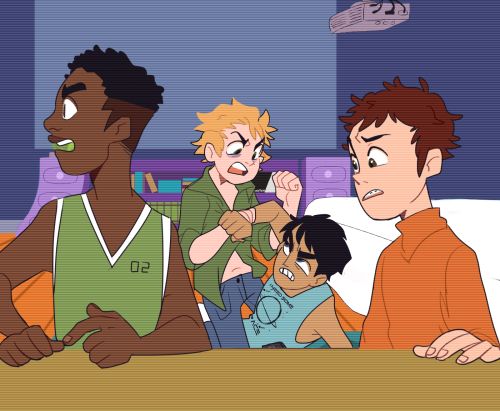
- Exerpt from Parent Initial Consultation Report (Childress, nd)
Page load link
Go to Top
Central Ohio Parental Alienation - Do Not Force the Child to be with their Rejected Parent
It is not uncommon for someone to say "we should not force the child to be with a parent".
See also all frequently asked questions (objections) about pathogenic parenting
See also Karen Woodall's discussion about the child's need for temporary protection from abuse and the child's experience of that protection.
See also Dr. Childress' essay on Associated Clinical Sign 1: Use of the word "forced".
Here is a response from Dr Childress' Facebook Page that I have reproduced here to make it easier to read and refer to:
"It appears my Facebook page has become infested by allies of the pathogen, and they don’t seem to be voluntarily going away, so I feel it becomes my ethical obligation to alert them that they are posting to the Facebook page of a clinical psychologist, and that in doing so they may be disclosing more information about their deeper psychological processes than they may consciously be aware of.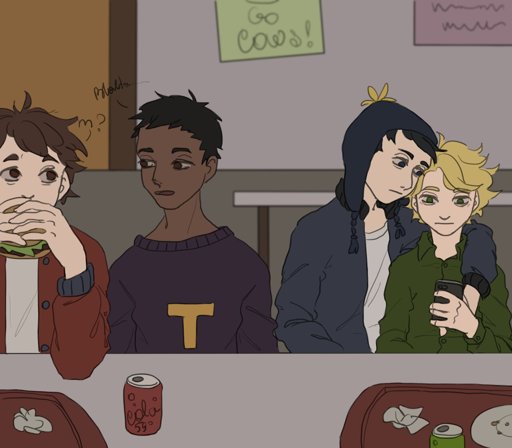 So in the spirit of full disclosure:
So in the spirit of full disclosure:
I am a clinical psychologist. Clinical psychologists possess advanced education and training that allows us to see deeper into people’s psychological processes about which the person may be unaware. Beginning with the work of Sigmund Freud and his colleagues, such as Melanie Klien, Erik Erickson, and Afred Adler, and through such preeminent figures as Heinz Kohut, Otto Kernberg, Carl Rogers, Virginia Satir, Fritz Perls, and Aaron Beck, and from a host of others, clinical psychologists develop a specialized capacity to see beneath the surface presentation to underlying psychological processes.
Now for the most part I tend to respect people’s psychological privacy so I usually avert my clinical attention from the underlying process being exposed, and I try not to allow myself to process information at the deeper levels except when working with clients. And for normal-range people, such as targeted parents and people in the general population, their psychological processes are not particularly prominent and so their process doesn't typically stand out from the background topics of discussion.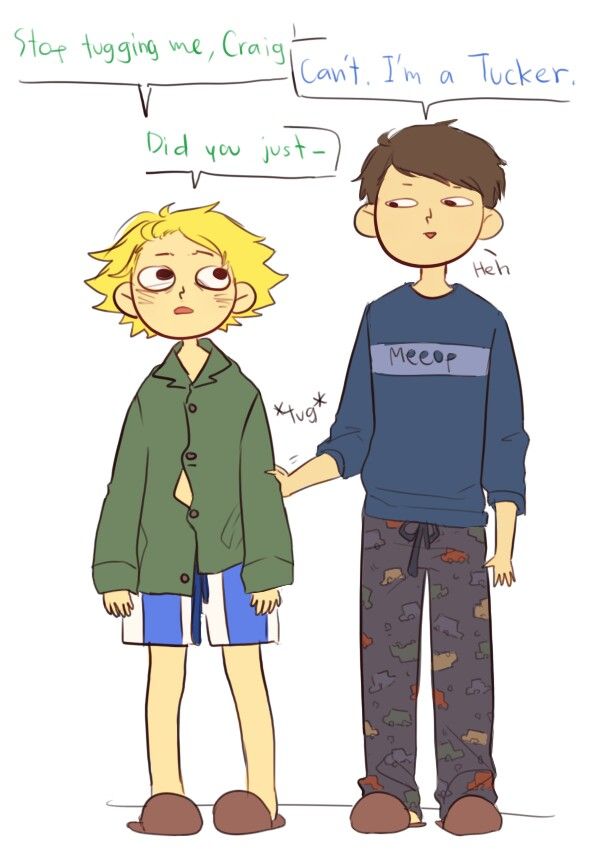
Sherlock Holmes was once asked by Dr. Watson how Holmes could solve such difficult cases involving such strange clues. Holmes responded that it was exactly the strangeness of the clues that made the cases easy to solve, because these clues were so distinctive that they could only be produced by a limited set of factors. It was the ordinary cases that were hard, because so many things could account for ordinary.
The same is true for a clinical psychologist. Ordinary and normal-range presentations provide few clues as to underlying process precisely because the features are so ordinary and normal. However, clearly distinctive presentations provide an abundance of indicators regarding deeper process.
With this in mind, I feel ethically obligated to advise the minions of the pathology who have sought out my Facebook page to post and expose their process that I am a clinical psychologist, and so they may be displaying deeper aspects of their psychological process than they are aware of displaying.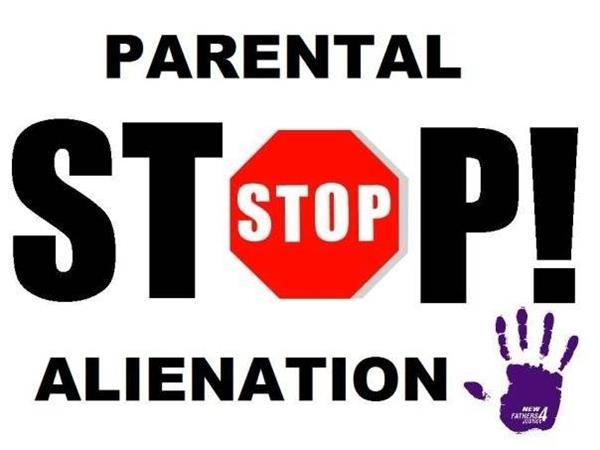
I am not seeking them out. I am respecting their psychological privacy by not seeking them out where they live in order to look into their underlying process. But if they are going to come to my Facebook page and display their process so openly, then that’s their choice, to so openly expose their process to a clinical psychologist. Up to you.
For targeted parents who are following this discussion, the display on my Facebook page by the allies of the pathology highlights a variety of factors associated with this pathology, and over the course of time I will be describing the features of this underlying structure of the pathology to help you understand what this pathology entails and how to address it.
At a professional level I have found the display very helpful. In this regard I would call your attention to two prominent themes advanced by the allies of the pathogen. The first is the empowerment of the child (“We should listen to what the child wants”).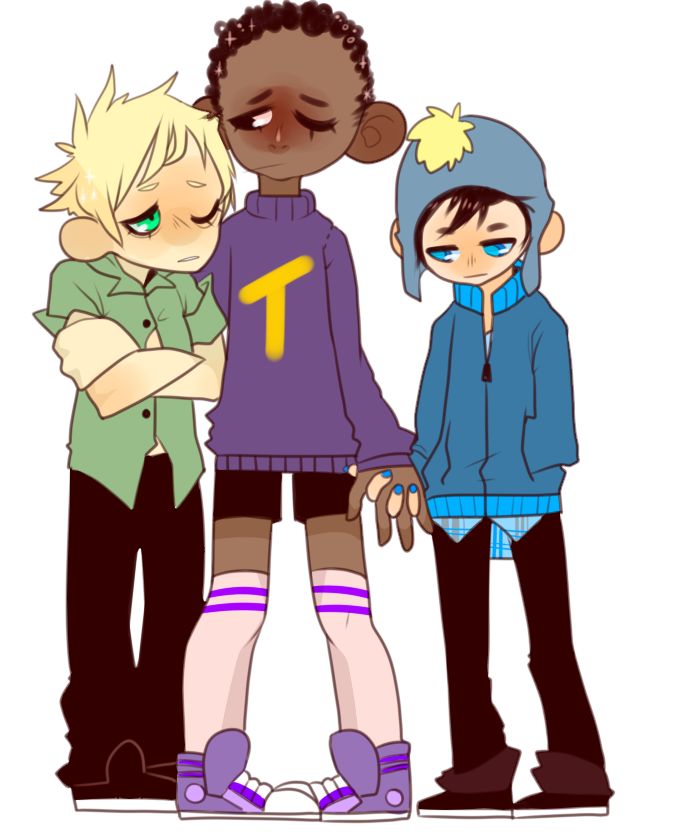 You’ll note that this is the Associated Clinical Sign 2 in my blog post on the diagnosis of this pathology, and I describe the origins of this “empowerment of the child” feature on pages 230-242 of Foundations.
You’ll note that this is the Associated Clinical Sign 2 in my blog post on the diagnosis of this pathology, and I describe the origins of this “empowerment of the child” feature on pages 230-242 of Foundations.
The second feature of note are the allegations that the child is being “forced” (coerced) to have a relationship with the targeted-rejected parent (Associated Clinical Sign 1). I similarly address the origins of this allegation on pages 230-240 of Foundations.
For example, with regard to the allegation of the child being “forced” to have a relationship with the targeted-rejected parent, in Foundations I describe the underlying psychological dynamics of this symptom feature on pages 232-236, with the concluding summary:
From Foundations: “The use of the term “force” to characterize the child’s relationship with the targeted parent is a subtle but powerful manipulative communication that:
1. Mischaracterizes the child’s “opportunity” to have a positive relationship with a loving and affectionately available parent as somehow being a bad thing;
2.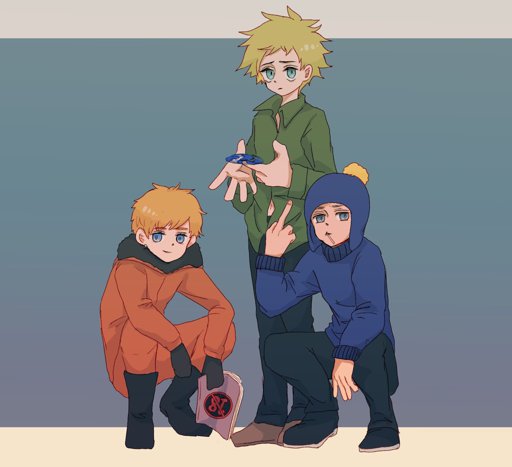 Empowers the child within the trauma reenactment narrative into rejecting a relationship with the normal-range and affectionally available targeted parent;
Empowers the child within the trauma reenactment narrative into rejecting a relationship with the normal-range and affectionally available targeted parent;
3. Enlists naïve therapists and attorneys into becoming allies who inadvertently collude with the psychopathology by supporting the child’s empowerment to reject the targeted parent;
4. Disempowers efforts to encourage the child’s cooperation in forming a positive relationship with the targeted parent by implying that such efforts are somehow “abusive” of the child by not “respecting the child’s wishes.”
From Foundations: “Whenever a child characterizes a relationship with a normal-range and affectionally available parent as being “forced” to be with this parent, therapists and attorneys working with children should immediately and clearly reframe a relationship with the other parent in a more balanced way. The child is being offered a “valuable opportunity” to form a positive relationship with both parents. The child is not being “forced,” the child is “cooperating” in forming a positive relationship with a normal-range and affectionally available parent. The child is expected to show appropriate pro-social values of kindness, empathy, cooperation, and respect for authority.” (Foundations, p. 236)
The child is not being “forced,” the child is “cooperating” in forming a positive relationship with a normal-range and affectionally available parent. The child is expected to show appropriate pro-social values of kindness, empathy, cooperation, and respect for authority.” (Foundations, p. 236)
And here it is... this associated symptom feature just walks up and posts itself to my Facebook page. No model of pathology can have such incredibly specific predictive power unless it is an accurate model of the pathology.
What I find so incredibly valuable, however, is the display of underlying process associated with the psychological dynamics of the ally. I have seen the pathology of the narcissistic/borderline parent. What I haven’t had the opportunity to see is the underlying psychological dynamics of the ally. So having allies of the pathology come to my Facebook page and display their psychological process for me has been incredibly helpful.
I believe I have handled these allies of the pathology in a professionally responsible way.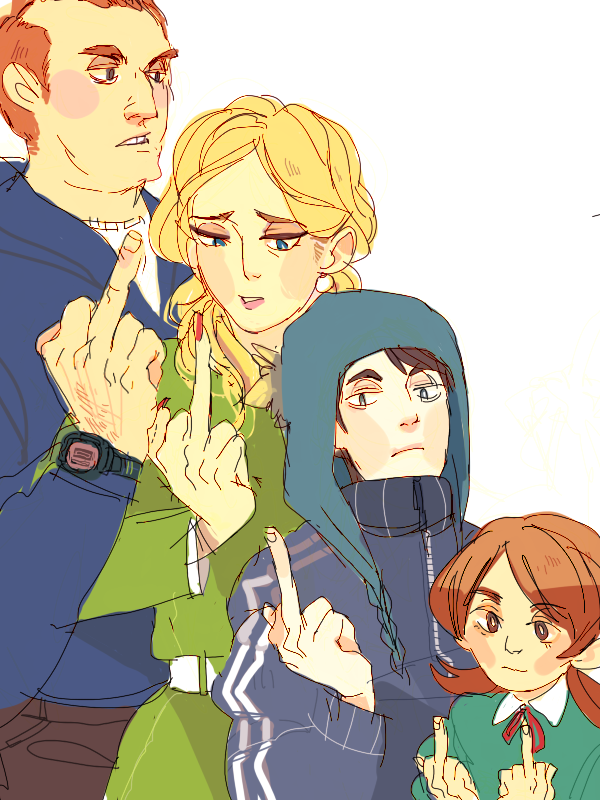 I first responded to them as if their expressed questions and concerns were authentic. Once they displayed that their comments were not authentic efforts at dialogue but were expressions of an underlying fixed agenda, I then disengaged and provided them with an opportunity to similarly disengage and go away on their own in response to non-reinforcement.
I first responded to them as if their expressed questions and concerns were authentic. Once they displayed that their comments were not authentic efforts at dialogue but were expressions of an underlying fixed agenda, I then disengaged and provided them with an opportunity to similarly disengage and go away on their own in response to non-reinforcement.
It now appears that they are remaining active on my Facebook page so I am alerting them that by posting on the Facebook page of a clinical psychologist they are potentially disclosing more information about their underlying psychological processes than they may be consciously aware of, thereby providing them with another opportunity to protect their psychological privacy from scrutiny. At this point, I believe I’ve taken the professionally responsible steps to protect their psychological privacy, and from here on out it is their choice if they wish to expose their underlying process.
However, as a clinical psychologist I have found their posting incredibly helpful in answering a few remaining questions I had about the pattern of information structures within the ally’s attachment networks. Yet even though I find this display of underlying process helpful, I believe it is the proper thing to do to alert these allies of the pathology that they are exposing their deep process dynamics in order to give them the opportunity to heed this counsel and protect their psychological privacy.
Yet even though I find this display of underlying process helpful, I believe it is the proper thing to do to alert these allies of the pathology that they are exposing their deep process dynamics in order to give them the opportunity to heed this counsel and protect their psychological privacy.
Craig Childress, Psy.D.
Clinical Psychologist, PSY 18857"
And this one from Dr Childress' Facebook Page - Lessons in Clinical Psychology
Lessons in Clinical Psychology:
The Psychology of the Flying Monkey Minions – Attacks to Provoke Defense
For Targeted Parents:
So let’s drop down a bit more into the pathology of the flying monkey minion. By the way, Karen Baruch brought the term “flying monkey” to my attention. The Urban Dictionary defines a flying monkey as,
From the Urban Dictionary: “In popular psychology, a flying monkey is someone who does the narcissist’s bidding to inflict additional torment to the narcissist's victim.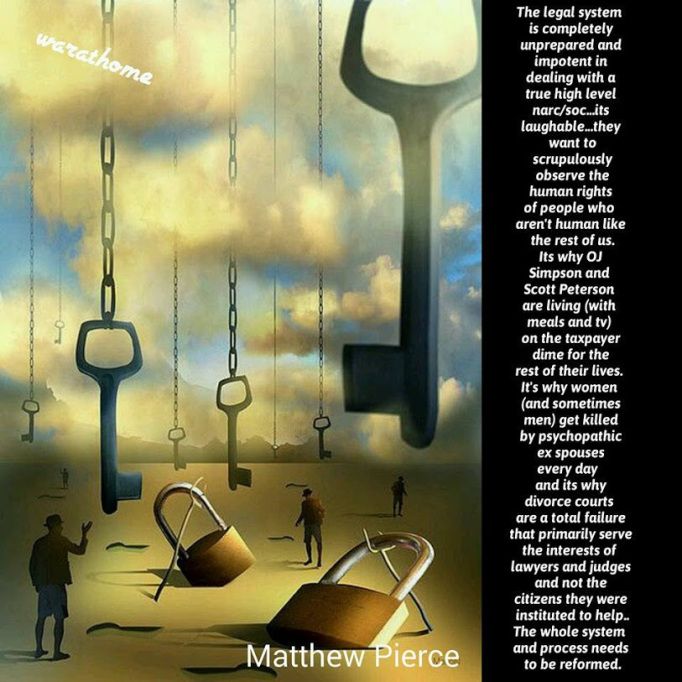 It might consist of spying on the victim, spreading gossip, threatening, painting the narcissist as the victim and their target as the perpetrator.”
It might consist of spying on the victim, spreading gossip, threatening, painting the narcissist as the victim and their target as the perpetrator.”
The swarming of minions surrounding narcissistic personality processes is apparently such a common phenomenon that it has its own Urban Dictionary definition – flying monkeys. So let’s unravel the psychology of the flying monkeys who have so graciously decided to display their psychological process on my Facebook page.
We’re going to be shifting our analysis from content to process. Content is what we say. Process is why we say it. For a clinical psychologist, identifying the process dynamics of the person is key to understanding their manifestation of pathology. Process reveals the underlying “why” that is creating the content of the pathology we see displayed before us.
We start by recognizing the surface features of the display. Then we begin unraveling the knot of pathology, strand by strand.
These flying monkey minions present a prominent self-perceived self-importance – “Everybody listen to me as I proclaim truth and pronounce judgement; because I’m important.”
While they purport themselves to be proclaiming truth in pronouncing their oh-so-important judgments regarding what truth and reality are – their views reveal a profound – and I mean profound - ignorance and a motivated distortion to reality that seems almost willful, as a means to advance a personal agenda – a psychological agenda. Thing is, it actually is purposeful – but just not conscious; they are not aware of their motivated purpose – but there is a driving unconscious motivation to their willful distortions of truth. At the surface level their distorted accusations are designed to provoke a response.
These minions of the pathology don’t realize this. They’re locked in their own psychological process. They cannot see what they cannot see – what is “unconscious” – they actually believe the distorted truth in which they live (as does your ex-, the narcissistic/borderline parent).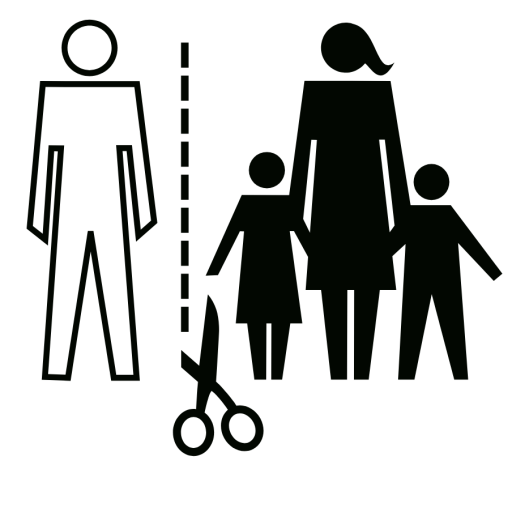 But as a clinical psychologist, my entire education and training is toward exactly that purpose – seeing the unconscious psychological dynamics of the person’s motivations that drive what they do on the surface. To see the process behind and beneath the content. That’s what I do as a clinical psychologist. That’s my profession.
But as a clinical psychologist, my entire education and training is toward exactly that purpose – seeing the unconscious psychological dynamics of the person’s motivations that drive what they do on the surface. To see the process behind and beneath the content. That’s what I do as a clinical psychologist. That’s my profession.
As a clinical psychologist, it is the personal psychological agenda of these flying monkey minions that I find most fascinating. I’m like a kid in a candy store – oh my God, look at that… and over there, that is so fascinating… and this, look at this. The display of their core psychological process is simply wonderful. It’s so rich that I hardly know where to start. I couldn’t ask for more. It’s like the universe is giving me a Christmas present.
So let’s start unraveling things.
These flying monkey minions pontificate on their (distorted) truth as if they believed their (ignorant) opinions had value – reflecting a narcissistic self-perceived grandiosity in which their (ignorant) opinions have importance and value. Opinions born in ignorance are of no value.
Opinions born in ignorance are of no value.
It’s as if they walked into a group of physicists and started to criticize the theory of relativity, for example that “Time doesn’t speed up and slow down – I’ve never seen that. My clock always keeps the same time.” If you want to talk with physicists, learn physics. Otherwise, you are just ignorant and your opinions are of no value. Did you know that all of our GPS systems have to continually make adjustments for the very real time dilation effects predicted by relativity theory?
But this is critical to understanding the grandiosity of their narcissistic self-inflation – they actually believe their ignorant opinions have value – they actually believe they are “entitled” to discuss and dispute the principles of physics with physicists, even though they know absolutely NOTHING about physics. What marvelous hubris. It’s so delightfully narcissistic - “Even though I am completely ignorant, my opinions are more important than everyone one else, even the professionals.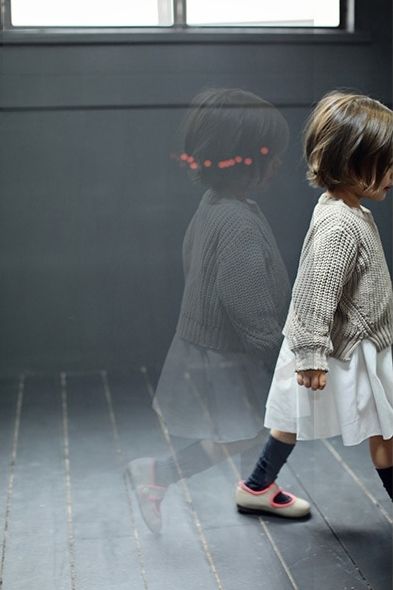 Everyone needs to listen to me because I’m so incredibly important, and I will tell you what truth and reality are based on what I need truth and reality to be.” It’s so marvelously narcissistic.
Everyone needs to listen to me because I’m so incredibly important, and I will tell you what truth and reality are based on what I need truth and reality to be.” It’s so marvelously narcissistic.
But this is just the surface content level. It’s the underneath process level that I find so fascinating as a clinical psychologist, because it’s this underneath process level that displays the structure of the pathogen – the computer virus – that is infecting the information structures of the attachment system.
Remember how I said the pathogen has a set of three defensive meme-structures,
1) Remain concealed
2) Seek allies
3) When threatened with exposure, attack to provoke a defensive response
Well, in the display of the flying monkey minions on my Facebook page we see manifestations of all three of these organizing "meme-structures" of the pathogen.
1. Concealment: The minions argue that we need to “listen to the child” – in other words, that we need to keep the psychological control of the child by a narcissistic/borderline parent concealed behind the child’s manipulated symptom display. Classic. “Don’t break the concealment of the parent’s psychological manipulation of the child.”
Classic. “Don’t break the concealment of the parent’s psychological manipulation of the child.”
What’s even more intriguing is that the flying monkeys specifically object to identifying the pathogen – “Don’t use the word pathogen – don’t identify the pathogen.” This is such an astoundingly specific effort to maintain the concealment that I am awe-struck by such an overt display.
The specific effort to conceal the existence of the pathogen by objecting to its identification as such is truly incredible – “There’s no pathogen. There’s nothing here. Don’t look over here.” The distorted information structures in the attachment system of the flying monkeys are trying to specifically prevent the identification of the pathogen to keep its existence concealed – “Nothing here – don’t look here.” The specificity of this effort is so incredibly remarkable. And look at the vehement insistence surrounding this specific effort at concealing the pathogen, such that when I identify the existence of the pathogen this draws from the flying monkey a comparison of me to Nazis. Wow. Hit a nerve did I?
Wow. Hit a nerve did I?
2. Allies: These flying monkeys have no stake in this pathology. They’re not the “alienating parent.” Yet they feel compelled to actively support the pathology. Why?
Why are they coming to my Facebook page and arguing in favor of maintaining the pathology of a child’s role-reversal relationship with a narcissistic/borderline parent? Why are they fighting so hard to disable any effort directed toward restoring the child’s normal and healthy psychological development? These are the allies. And what I find so marvelous as a clinical psychologist is now I’m getting the opportunity to view directly into the pathogen’s influence on the various brain systems of these allies. I can’t tell you how almost gleeful I am at this opportunity.
3. Attack (with great viciousness) in order to place the threat on the defensive: This expression of the pathogen’s defensive “meme-structure” is the key to why these flying monkeys have come to my Facebook page. They are attacking me to place me on the defensive, because as long as I am defending myself from their attacks I don’t pose a threat to breaking through the pathogen’s veil of concealment.
They are attacking me to place me on the defensive, because as long as I am defending myself from their attacks I don’t pose a threat to breaking through the pathogen’s veil of concealment.
Classic, classic, classic. And here it is. It just walks right up to my Facebook page and presents itself as my holiday gift. Each post by these flying monkey minions reveals more and more about the underlying "meme-structure" organization of the pathogen that’s driving this process dynamic. A gift that keeps on giving.
As an example, the flying monkey minions appear to be focusing their attack on the Single Case ABAB design. This attack is designed to place me on the defensive, thereby nullifying my threat to the pathogen of exposing it from behind its veil of concealment. As long as I’m defending myself, the focus is on me not on the pathology. Classic. I’m sure every targeted parent is familiar with this tactic of the narcissistic/borderline pathology. They throw out crazy and irrational attacks – sometimes even making untrue and distorted allegations of abuse - which place you on the defensive, always keeping you defending yourself and your parenting practices.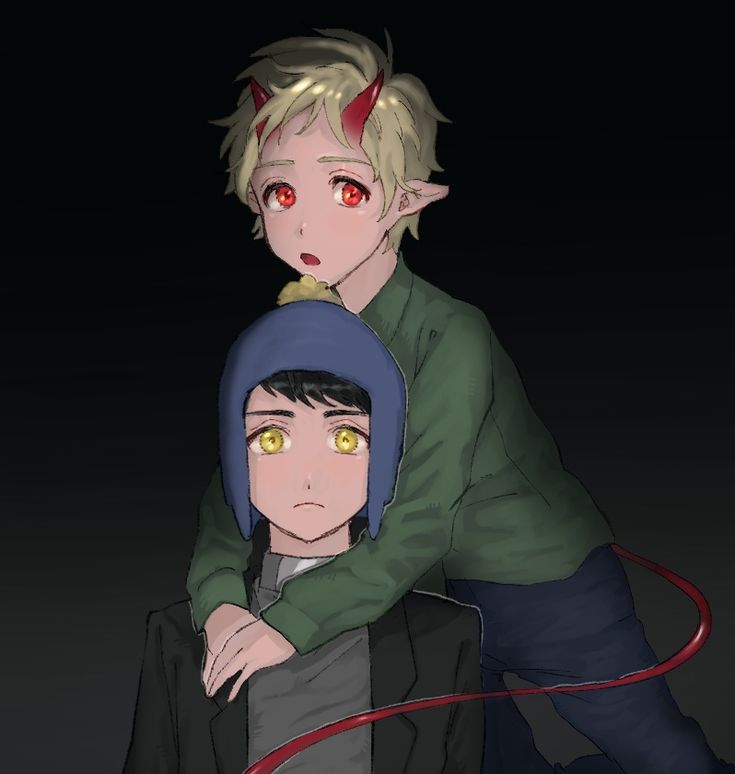 Even the child’s induced symptoms of rejecting you imply that you’re somehow a bad parent and place you on the defensive of justifying your parenting and continually correcting false and highly distorted accusations.
Even the child’s induced symptoms of rejecting you imply that you’re somehow a bad parent and place you on the defensive of justifying your parenting and continually correcting false and highly distorted accusations.
This is all part of a very specific defensive “meme-structure” of the pathology designed to defend itself from exposure and maintain its concealment – attack to put the threat on the defensive, then the focus is on you (or me in this case) and off of the pathology.
So this current expression of this particular “meme-structure” defensive process (attack with wildly distorted accusations to provoke a response that places the other person on the defensive) is to attack the Single Case ABAB design. I’m sure these flying monkey minions scoured every possible nook and cranny of my work looking for something to attack, and they decided the ABAB design was it.
But their attack isn’t a serious critique. It’s solely designed to provoke a defensive response that places the focus on me and takes it off the pathology, so that the pathogen can then slip back into its cover of concealment. So let me show you just how irrational their attack really is:
So let me show you just how irrational their attack really is:
In 100% of normal-range parenting by all parents everywhere in the country, when children present defiant and disrespectful behavior the parent imposes consequences – called discipline – designed to correct the child’s misbehavior. This isn’t called “coercion” – This is called “parenting.” Duh.
Are these flying monkey minions seriously proposing that parents should not discipline their children for defiance, disrespect, and misbehavior? Really? That’s the criticism? That we should just allow children to say and do whatever they want, however rude, defiant, and disrespectful and we as parents shouldn’t do anything about it because we don’t want to “coerce” the child into developing socially appropriate behavior. The child doesn’t want to do homework – oh well, we don’t want to “coerce” the child to do anything the child doesn’t want to do. The child is defiant and disrespectful. Oh well, we wouldn’t want to “coerce” the child into developing socially appropriate behavior and respect for parental authority.
And this is the standard we are to apply to all parents across the country? No disciple of children’s defiant, rude, and disrespectful behavior. No parental expectations that the child show positive prosocial behavior. How incredibly absurd and just plain stupid is that? Parents should not discipline their children because that would be coercion. That’s just plain stupid - and so fundamentally wrong as to be absurd on its face..
Two things, and then I’m going to stop arguing with stupidity. First, a single case research design is one of the truly standard hallmarks of professional research methodology. Solid, solid, solid. Second, the Single Case ABAB protocol is a Strategic Family Systems intervention. Once the flying monkey minions learn what a Strategic Family Systems intervention is – read Jay Haley and Cloe Madanes – in fact learn Family Systems theory generally; Minuchin, Framo, Bowen, Satir, Boszormenyi-Nagy – THEN we’ll have something to talk about. But spouting bogus opinions born in abject ignorance is just… ignorance.
But spouting bogus opinions born in abject ignorance is just… ignorance.
If any reasonable and rational human wants to discuss the issue of parenting and the role of discipline and guidance, I’d be more than happy to do so. I’ve started a blog on Developmentally Supportive Parenting where I will be discussing all aspects of parenting. But these current attacks by the flying monkey minions are not authentic, they are manifestations of the pathogen’s efforts to nullify a threat to its concealment by placing the threat on the defensive so as to take the focus off of the pathology.
But they’re not actually after me, they’re after Dorcy. It’s Dorcy they want and I’m standing in the way. So they’re searching for some way to nullify me so they can get to her. I represent a threat to the pathogen because I threaten to expose it from behind its veil of concealment. Dorcy represents an even bigger threat because the High Road protocol will expel the pathogen from the attachment networks of the children.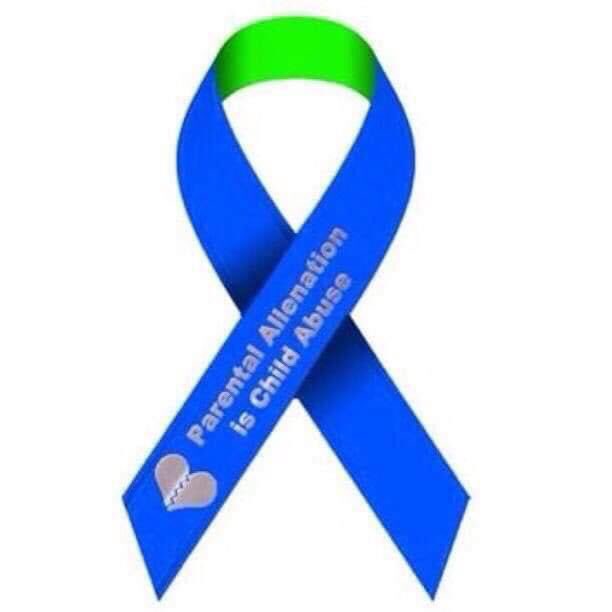 No, no, no. That must NOT be allowed to happen. The pathology MUST be maintained at all costs. Dorcy must be destroyed, both professionally and personally – leading to wild allegations and wholesale distortions of truth that are hurled at her. Attack with great viciousness. Truth and accuracy are not relevant.
No, no, no. That must NOT be allowed to happen. The pathology MUST be maintained at all costs. Dorcy must be destroyed, both professionally and personally – leading to wild allegations and wholesale distortions of truth that are hurled at her. Attack with great viciousness. Truth and accuracy are not relevant.
And if Dr. Childress stands in the way, then he too must be professionally discredited and personally destroyed - malign his integrity, question his ethics, spew venom. This pathogen is extremely vicious – a fact which every targeted parent understands all too well.
Why are these flying monkey minions displaying such an obsessive need to support and maintain the extremely severe developmental psychopathology of a child’s manipulation and exploitation by a narcissistic/borderline parent to meet the parent's own emotional and psychological needs?
Let’s find out, shall we. Stay tuned as I unravel even deeper levels of the psychology of the flying monkey minion.
Craig Childress, Psy.D.
Clinical Psychologist, PSY 18857
Parental Alienation Syndrome (PAS): pseudoscience leading to child abuse one
pseudoscientific concept in the field of child psychology and psychotherapy. We are talking about the so-called "syndrome of alienation of one of the parents", in English. "Parental Alienation Syndrome" (PAS). The PAS concept boils down to the following. When parents unfortunately get divorced, sometimes the child (teenager) then does not want to communicate with one of the parents (who does not live with him). And here is a certain child psychiatrist in the USA - Richard Gardner - back in the early 80s of the last century, he invented a "diagnosis" unknown to medicine in the field of mental health - "alienation syndrome of one of the parents" , which allegedly causes this behavior child. In certain circles in the West, this concept has become increasingly popular, offering a seemingly "simple explanation" in complex conflict situations after divorce [1, 2, 3, 4].
In English literature, this mythical "diagnosis" invented by Gardner is denoted by the expressions "parental alienation syndrome" (abbreviated as PAS) or "parental alienation disorder" (PAD). In recent years, people often say simply "parental alienation" (RA) , but mean the same thing [1]. According to Gardner and his followers, PAS is a mental disorder (disease) supposedly arising from the fact that the mother (most often this situation is meant) cunningly sets the child against the former spouse, exposing the child to powerful psychological influence and manipulations of type brainwashing. PAS is also said to induce the development of other severe personality disorders, such as narcissism, which is a "serious societal problem." By default, it is assumed that many mothers after a divorce are constantly engaged in such “brainwashing” of children, increasingly spreading such a “dangerous”, “socially significant disorder” as PAS in society [1, 2, 3]. About the "therapy" proposed for the treatment of the invented "disease" will be discussed a little later.
About the "therapy" proposed for the treatment of the invented "disease" will be discussed a little later.
Significantly, this "diagnosis" has never been confirmed by credible mental health research. But many researchers note that the PAS concept brings the prints of very specific representations of its author - Gardner ( in of its publications, for example, there are many statements in the justification of pedophilia and incest
9000 66666 [2, 5]. Therefore, it is not surprising that not only in its country of origin, the USA, but also in many other countries located on different continents (Europe, Asia, South America, Africa), the PAS concept is sharply criticized for being anti-scientific by a number of leading experts in the field developmental psychology, child psychology, children's mental health, pediatrics, law [1, 2, 3, 4, 5, 6].
At the same time, it is important to emphasize that the PAS concept is characterized not only as pseudoscientific (which is already bad in itself), but also as a threat to the health and life of children. This point is also usually emphasized in publications critical of PAS from various countries, including the United States. As an example, we can cite an article published in 2014 in the Italian Journal of Pediatrics [2], in which PAS is classified as pseudoscientific concepts that are dangerous to the life and health of children .
Experts who criticize the PAS concept rightly point out that there can be many different reasons why a child after a divorce in a family, finding himself in a stressful situation, does not want to communicate with one of the parents [1, 3, 4]. In certain cases, this may be associated with the manifestation of cruelty and violence against the child, his mother and other family members. In such a situation, the child may not have contact with the parent even before the divorce. But even if such extreme cases of violence aside, there are many “natural” reasons why, after a couple divorces, their children may not want to spend, for example, weekends in the house of a estranged parent (father or mother, depending on who the court transferred custody of the child to. When it comes to a baby, attachment reactions may come to the fore: it is normal for a small child not to want to be separated from the closest object of affection (mother), to be afraid of little-known people (who may be in the father’s house), to shun the father if the child has lost the habit of it, and so on. At the same time, some features of the behavior of the father himself can enhance such reactions. For older children who have reached adolescence, it is normal to strive to communicate with peers, schoolmates, which can serve as a reason for refusing to a parent (living separately) in more frequent meetings with him.
In such a situation, the child may not have contact with the parent even before the divorce. But even if such extreme cases of violence aside, there are many “natural” reasons why, after a couple divorces, their children may not want to spend, for example, weekends in the house of a estranged parent (father or mother, depending on who the court transferred custody of the child to. When it comes to a baby, attachment reactions may come to the fore: it is normal for a small child not to want to be separated from the closest object of affection (mother), to be afraid of little-known people (who may be in the father’s house), to shun the father if the child has lost the habit of it, and so on. At the same time, some features of the behavior of the father himself can enhance such reactions. For older children who have reached adolescence, it is normal to strive to communicate with peers, schoolmates, which can serve as a reason for refusing to a parent (living separately) in more frequent meetings with him.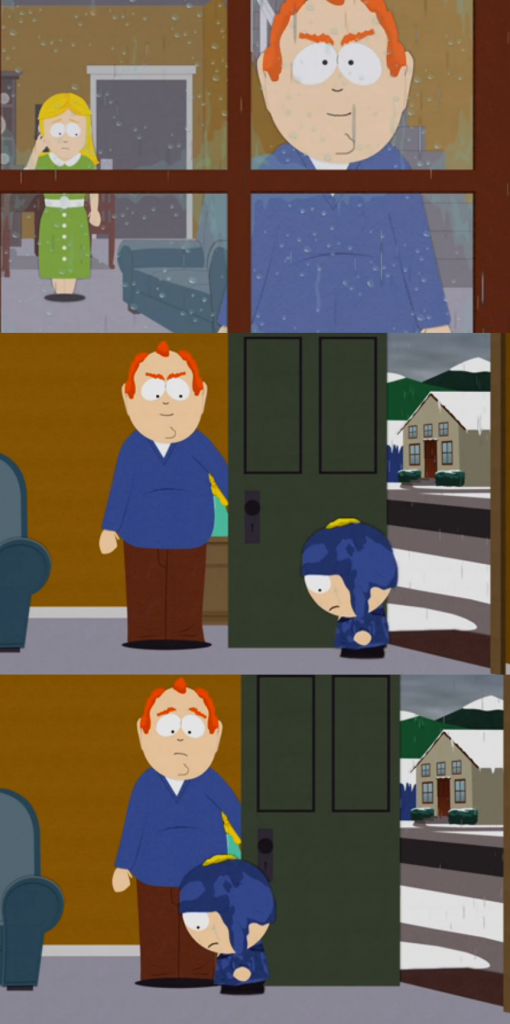 Of great importance will be the appearance of a new family for a father or mother, what kind of relationship there will be with the child, and many other "everyday" factors.
Of great importance will be the appearance of a new family for a father or mother, what kind of relationship there will be with the child, and many other "everyday" factors.
Of course, in life there is also such a situation when one of the divorced parents turns the child against the other, and he succeeds in doing this. But no one has proven that this happens often and everywhere and is the main or one of the main reasons for a child’s unwillingness to communicate with a parent after a divorce (as adherents of the PAS concept suggest) [1, 3, 4]. Scientific studies just show the opposite [3, 5].
The intimidating propaganda of PAS, depicting mothers as sinister manipulators or “alienators” (alienators), as PAS advocates put it, can be seen as an example of “moral panic” in society [1, 7].
Also, no one has proven that the child’s lack of attachment to one of the divorced spouses, unwillingness to communicate with him is a “diagnosis”, “symptoms” of some socially significant “mental illness”, by which one can reliably recognize that the child has become a victim malicious actions of a parent-manipulator (implying that most often such an "alienator" is the child's mother) [1, 3, 7, 8, 9].
However, these ideas have gained popularity among some lawyers and forensic psychologists, and as a result PAS (or more commonly RA) has become a common legal term in family courts.
Most often, such unsubstantiated accusations of “brainwashing” of a son or daughter are made against the mother beloved by the child, with whom he remains after a divorce (although in some cases the father is in this situation) [1, 3, 9]. All other, much more realistic and superficial explanations of the child's behavior recede into the background and are ignored [1, 9].
As a result, judges biased by the PAS concept often make wrong decisions that cripple a child's life [1, 3]. Firstly, a fictional (not confirmed by medical science) “psychiatric diagnosis” (PAS / RA) can be hung on him. Second, PAS advocates consider separation from a beloved parent (most often mother) an important component "therapy" for "parental alienation syndrome". Therefore, for the sake of such “therapy”, a child can be forcibly transferred to the family of another parent (forbidding communication with a beloved parent, more often the mother finds herself in such a situation).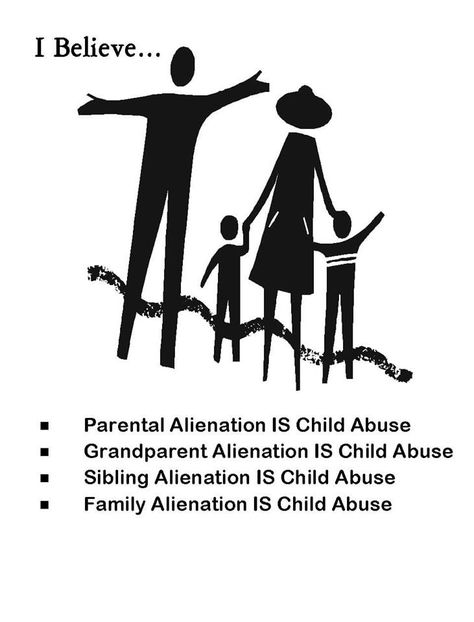 Or they can be sent to a special commercial "rehabilitation" center "for PAS psychotherapy" [1, 2, 3, 6, 9, 10, 11, 13, 14]. It is not surprising that such “therapy” can lead to psychological trauma to a child or adolescent and further deterioration of his relationship with an unloved parent [1, 11, 12]. There is more and more evidence of this from the young people themselves, who were forcibly subjected to "PAS-therapy" in childhood and adolescence [11]. There are known cases of children running away from home and even suicide as a result of such “therapy” [1, 2, 3, 6, 9, 10, 11].
Or they can be sent to a special commercial "rehabilitation" center "for PAS psychotherapy" [1, 2, 3, 6, 9, 10, 11, 13, 14]. It is not surprising that such “therapy” can lead to psychological trauma to a child or adolescent and further deterioration of his relationship with an unloved parent [1, 11, 12]. There is more and more evidence of this from the young people themselves, who were forcibly subjected to "PAS-therapy" in childhood and adolescence [11]. There are known cases of children running away from home and even suicide as a result of such “therapy” [1, 2, 3, 6, 9, 10, 11].
If at the same time the child complains about violence or cruelty (as the reason for his unwillingness to communicate with one of the parents), this, without understanding the situation, can be taken as “morbid delirium”, “a manifestation of a pathological tendency to lie”, “the development of narcissism » , only “providing PAS”, etc. [1, 3, 5, 14].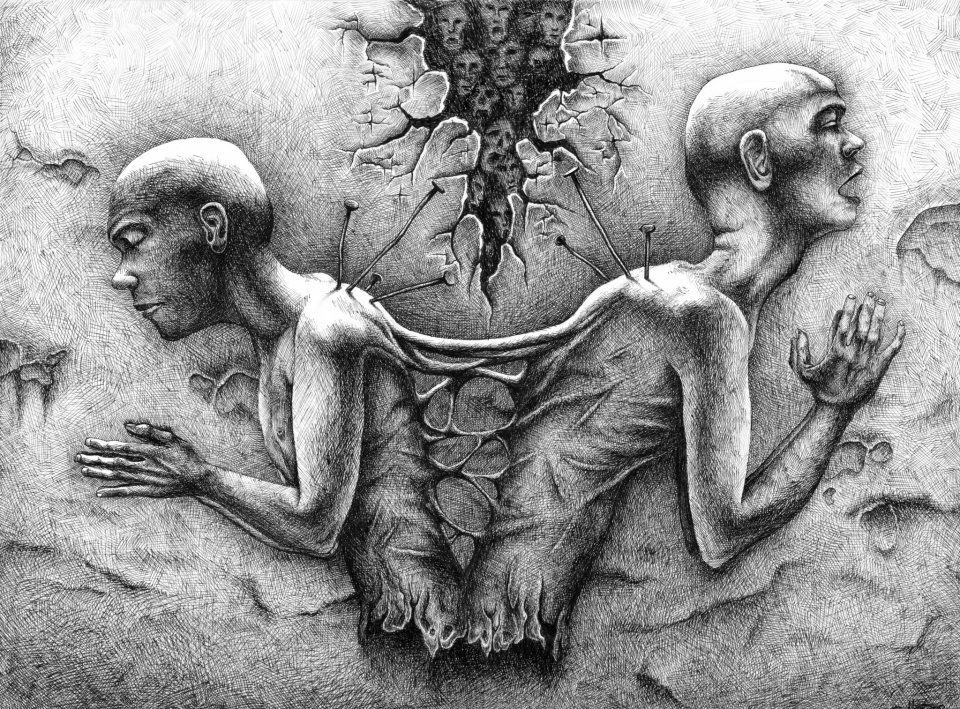
Evidence from the mother that the child is simply, for example, afraid of the parent, as he has experienced abuse from him, etc. - are perceived as "attempts to justify", only confirming that the mother is an "alienator" [14]. It is important that while PAS followers say that the concept of parental alienation should not be used in investigating cases of sexual abuse and child abuse, in practice it is often used to justify the aggressor. Accusations of “parental alienation” are often raised in courts against mothers when they try to protect their children from violence, as a result of which children can be separated from their mother and placed in the care of an insecure father [14]. Therefore, it is not surprising that PAS is also heavily criticized by feminist human rights organizations. However, there were situations when the label of "alienator" was just as unsubstantiated hung on fathers (although this happens more rarely).
There are many cases when all this led to such tragedies as the murders of children by alleged “innocent victims of alienators”, after the forced transfer of their sons and daughters to them as a result of incorrect judicial decisions made under the influence of the PAS concept [1, 3, 6 ].
This is such a Kafkaesque "theory", demonizing both the most beloved of the parents (most often this is the mother) and the child himself!
In order to get justice, overturn decisions made based on the pseudoscientific concept of PAS, return the children, the injured party has to spend a lot of money to continue litigation, and usually it takes a long time, exhausting people. It is known, , that the propaganda of PAS may also be connected with the financial interest of some unscrupulous "experts" and lawyers speculating in the courts with this false diagnosis, as well as pseudo-psychologists specializing in the "treatment" of a non-existent "disease" ("diagnosis", which they and invent it themselves) ( https://www.theguardian.com/global-development/2022/jun/12/parental-alienation-and-the-unregulated-experts-shattering-childrens-lives ).
As briefly mentioned above, the PAS concept reflected some very "specific" features of the views of its founder Gardner.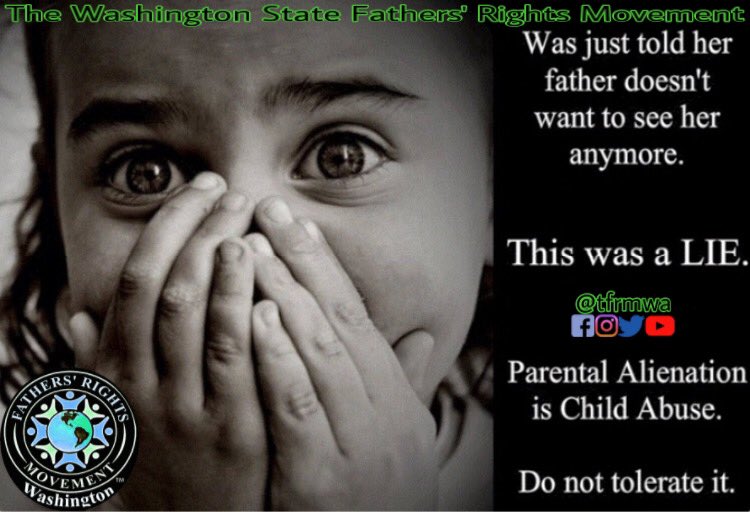 The fact is that Richard Gardner in his publications actually justified pedophilia and incest. This is striking, although Gardner himself assured that he does not support pedophilia, but "only" opposes excessive alarmism against pedophilia. For example, he believed that " pedophilia can contribute to the survival of the human race by serving the purpose of reproduction." In addition, Gardner believed that "alienation" of a child from a pedophile parent should not be allowed: "Special measures must be taken not to alienate a child from a seductive parent. The removal of such a parent from the home can only be seriously considered after therapy and closeness with the family which turned out to be useless. Also , if the child's mother reacts "too hysterically" to the discovery of pedophilia of the child's father, then the "psychotherapist" should also explain to her that it is necessary to look at things more broadly, to be more tolerant, since pedophilia was widespread in history and is now practiced by many .
The fact is that Richard Gardner in his publications actually justified pedophilia and incest. This is striking, although Gardner himself assured that he does not support pedophilia, but "only" opposes excessive alarmism against pedophilia. For example, he believed that " pedophilia can contribute to the survival of the human race by serving the purpose of reproduction." In addition, Gardner believed that "alienation" of a child from a pedophile parent should not be allowed: "Special measures must be taken not to alienate a child from a seductive parent. The removal of such a parent from the home can only be seriously considered after therapy and closeness with the family which turned out to be useless. Also , if the child's mother reacts "too hysterically" to the discovery of pedophilia of the child's father, then the "psychotherapist" should also explain to her that it is necessary to look at things more broadly, to be more tolerant, since pedophilia was widespread in history and is now practiced by many .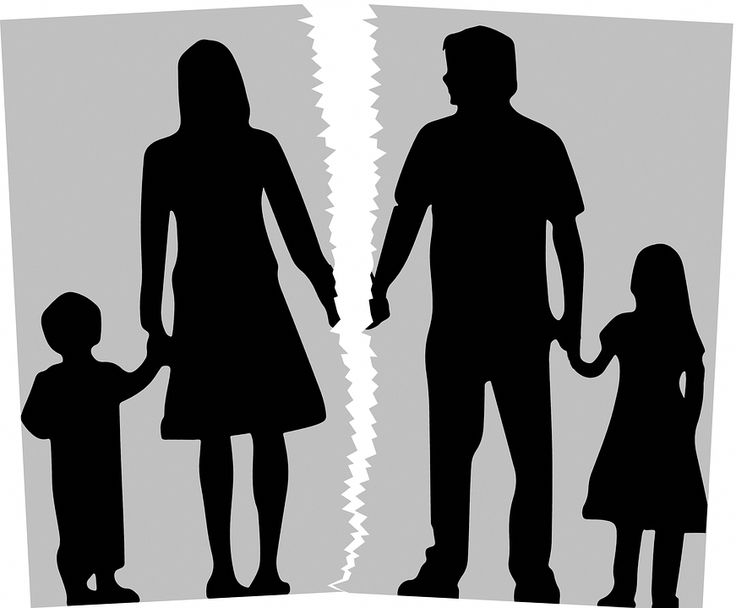 Older children also need to be helped to understand that sexual relations between adults and children were not always considered reprehensible acts. The child needs to be told about other societies where this was considered the norm. The child needs to be helped to appreciate the wisdom of Shakespeare's Hamlet, who said, "Nothing is good or bad, but only thoughts make it so" [15].
Older children also need to be helped to understand that sexual relations between adults and children were not always considered reprehensible acts. The child needs to be told about other societies where this was considered the norm. The child needs to be helped to appreciate the wisdom of Shakespeare's Hamlet, who said, "Nothing is good or bad, but only thoughts make it so" [15].
As the publicist Jennifer Baker (2015) rightly notes on this subject, “Parental Alienation Syndrome was invented by a therapist who also believed that pedophilia should become a social norm, responsibility for it should be placed on the child, and sexuality itself violence is not harmful. Can we expect that with such an approach, the statements of the child about cruelty and violence against him will be considered true? Of course not. Can such an approach protect the child from harm that is obvious from the point of view of common sense? Of course not.” [13].
It is not for nothing that in the USA a number of national organizations associated with legal protection (including the protection of children from violence and cruelty) oppose the propaganda of this false diagnosis. For example, the Center for Judicial Excellence ( Center for Judicial Excellence ) [16] and the American Professional Society for the Protection of Children from Abuse ( The American Professional Society on the Abuse of Children , APSAC ) [17].
For example, the Center for Judicial Excellence ( Center for Judicial Excellence ) [16] and the American Professional Society for the Protection of Children from Abuse ( The American Professional Society on the Abuse of Children , APSAC ) [17].
In English Facebook you can see groups for the protection and support of children and their mothers affected by the use of the PAS concept in courts, and in some of these groups it is directly called "pro-pedophile" (see, for example: https ://www.facebook.com/standbythechildren). In addition, in the United States, some critics of the PAS concept even compare this trend with a kind of “cult” or “sect” [8].
As an illustration of the theme of the PAS concept, one can also cite a well-known article [18] by the American specialist A. Katz (Alayne Katz), who worked with divorced families for seventeen years in courts, child protection services, etc. The meaning of the title of this article in translation [18] can be conveyed as follows: "Junk Science vs New Science Evidence.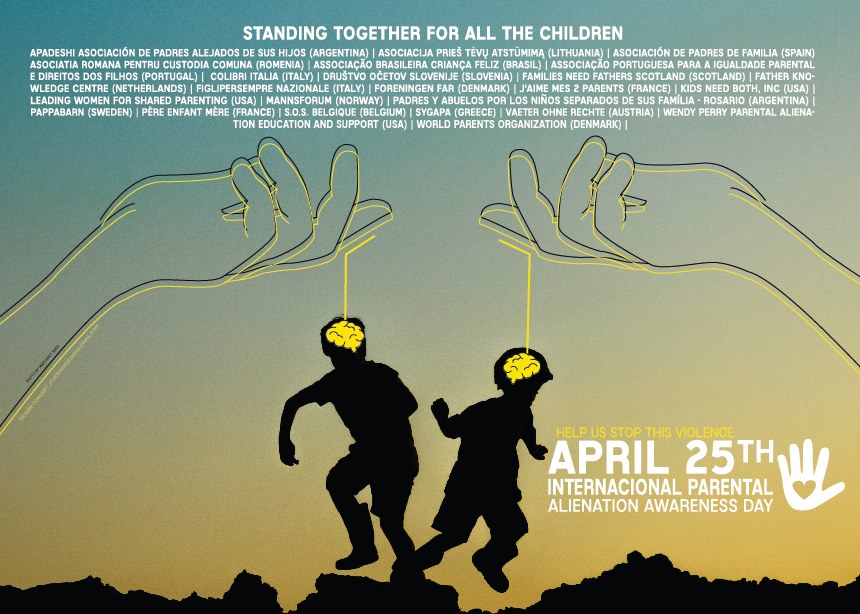 Parental Alienation Syndrome as a Cause of Mistakes in Child Custody Litigation.
Parental Alienation Syndrome as a Cause of Mistakes in Child Custody Litigation.
Katz has observed in practice the harm caused to children by the involvement of judges with the pseudoscientific concept of PAS. She had to lead the lawsuits of about 30 families with highly contentious divorces. Of course, as the author says, these are "not big statistics", but rather documented personal observations, but the whole concept of PAS is built on giving individual examples, and not large studies with statistical processing. Therefore, she believes that her experience can and should be cited as significant evidence.
Indeed, when asserting the scientific validity, benefit, efficacy and safety of a therapy (or the introduction of a new diagnosis), preventive measures (for example, a new vaccine), rigorous scientific evidence is needed, and the burden of this evidence lies with those who promote new therapy (drug, vaccine, diagnostics, etc.) . Proponents of the PAS concept and the "therapies" based on it have not yet fulfilled this requirement, despite the fact that this concept was put forward several decades ago.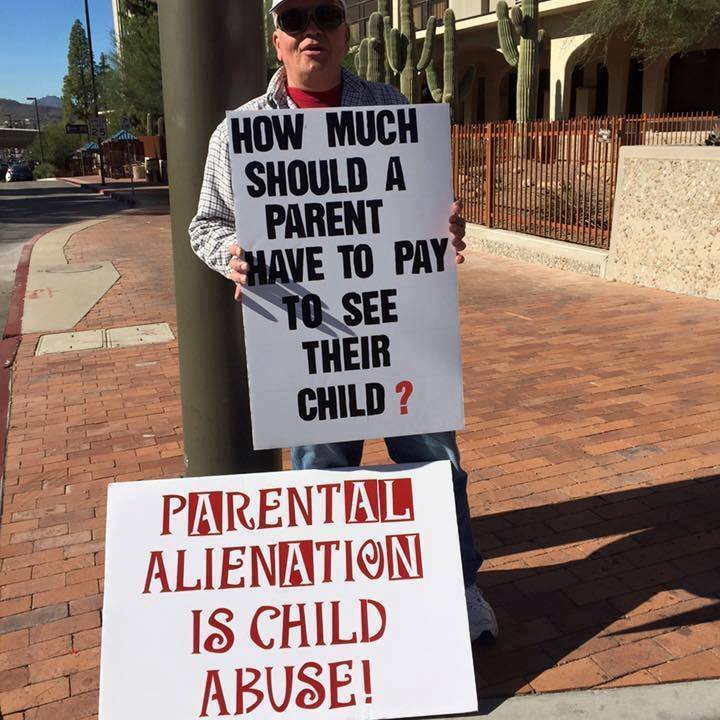
But when it comes to possible negative consequences of a new therapy with unproven efficacy and safety, small samples of observations are also taken into account. This is an accepted practice not only in evidence-based medicine, but also in the currently developing evidence-based psychotherapy based on scientific approaches in psychology.
And the results of A. Katz's observations are as follows. She handled 28 highly contentious divorce cases. In 20 cases, there were accusations from the mother regarding some misbehavior of the father with the children, but there were no cases of sexual abuse. But the investigation showed that only in two of these cases it was possible to speak of "mother's slander" against the father (that is, unjustified accusations from the mother were in the minority).
But the most interesting thing was even different. Of these 20 divorce cases, only in 7 cases contact with the father was broken, the children did not want such contact. But as it turned out, in these 7 cases there was no such contact even before the divorce for objective reasons, namely, related to untreated alcoholism and drug addiction, as well as unresolved family violence .
But as it turned out, in these 7 cases there was no such contact even before the divorce for objective reasons, namely, related to untreated alcoholism and drug addiction, as well as unresolved family violence .
In the remaining 13 cases, despite some confirmed wrong actions of the father, the children maintained contact with him both before and after the divorce. Apparently, these actions did not affect the deep parent-child relationship. For example, in some of these families, the fathers had an alcohol/drug addiction and even a mental illness. But they were undergoing therapy and were in remission. In some cases, there was proven family violence, but the fathers also went through therapy, overcame aggressiveness.
And yet, in all these 13 cases, before the divorce, there were good relations with the children, and in this situation, the children continued to want to communicate with their father after the divorce! ( despite the fact that these fathers were far from "ideal"!).
"Mother's slander" on the father also had no effect on the children's attitude towards their fathers, if these relations were good before the divorce .
In some cases, a negative attitude of children towards new families of fathers was revealed, but this did not affect the relationship with fathers, if such contact was before the divorce.
The article concludes:
“When research is being done on why a child refuses to communicate with one of the divorced parents (meaning a parent who lives apart from the child), good science and psychological research requires focusing on the behavior of this parent, untreated alcohol and drug addiction, unresolved domestic violence, ongoing conflict between parents, not on Parental Alienation Syndrom .
In order to better understand the difficult problems generated by the spread of the pseudoscientific concept of PAS, it is useful to refer to publications on this topic by one of the leading American experts in the field of developmental and child psychology - Prof.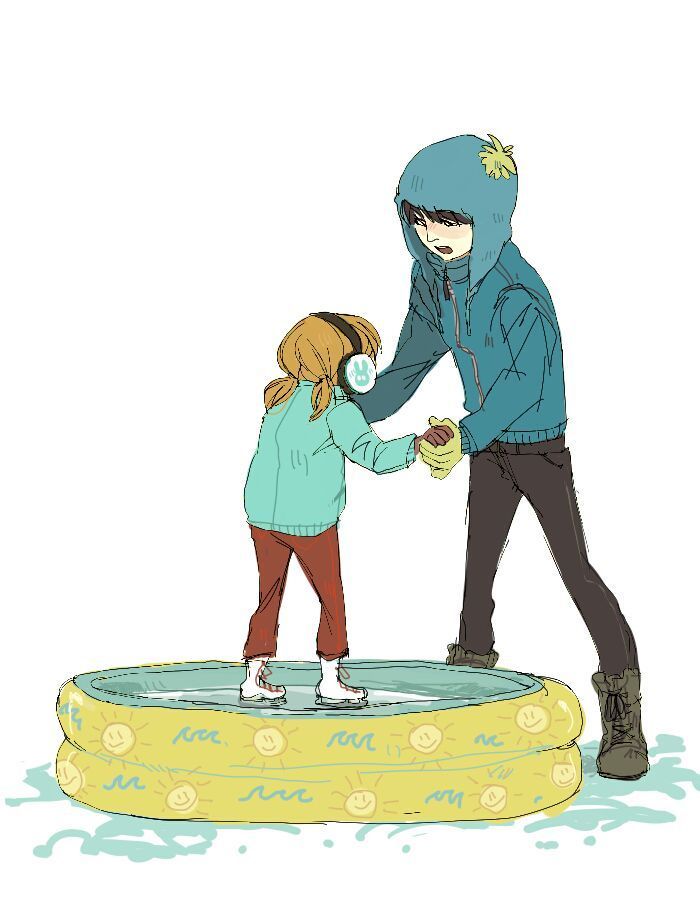 Jean Mercer. She analyzes the topic of PAS in detail in her scientific publications [12, 14], as well as in her famous blog, called "Childmyths" ("Myths of childhood").
Jean Mercer. She analyzes the topic of PAS in detail in her scientific publications [12, 14], as well as in her famous blog, called "Childmyths" ("Myths of childhood").
Science and education blog "Childmyths" ( http://childmyths.blogspot.com/ ) is mainly devoted to exposing pseudoscientific and potentially dangerous "alternative" directions ( "myths" ) in the field of child psychology, psychotherapy, child protection, parenting practices . And there you can see many detailed critiques of Mercer and PAS.
In particular, Mercer writes that the concept of PAS makes people "confess to something they did not do, otherwise they are threatened with the removal of children » [19]. Prof. Jean Mercer herself has repeatedly had to participate as an expert in this kind of lawsuits, successfully defending the rights of children and their mothers (falsely accused of “alienatorism” - “alienation of the father”), so she knows the problem firsthand [20].
The Childrenmyths blog even provides a transcript of one such trial that took place in December 2018 [20]. In this lawsuit, the mother of two teenage children who showed reluctance to visit with their father (living apart after a divorce) was accused of "toxic" behavior with children, allegedly leading to the development of PAS. This version was persistently promoted in court by a psychologist Craig Childress , one of the strongest supporters of the PAS concept in the USA. Together with the teenagers' father, he wanted to get the judge to "treat the diagnosis of PAS" children to be sent to live permanently in the father's house (although the children had an excellent relationship with their mother, and they did not want to live with their father). Prof. Jean Mercer, in her speeches at the trial, showed the absurdity of these arguments based on a number of pseudoscientific premises, including speculating on a false understanding of Bowlby's attachment theory [21]. And the judge agreed with the correctness of Jean Mercer and rejected all the arguments of a psychologist (it would be more correct to say a pseudo-psychologist) - an advocate of the concept of PAS, recognizing that the proposed "PAS therapy" will harm children [20].
And the judge agreed with the correctness of Jean Mercer and rejected all the arguments of a psychologist (it would be more correct to say a pseudo-psychologist) - an advocate of the concept of PAS, recognizing that the proposed "PAS therapy" will harm children [20].
It should be emphasized once again that neither Mercer nor other experts who criticize the PAS concept by any means deny the existence of such a phenomenon as setting a child against the other in a divorce conflict situation by one parent [12, 22]. However, according to the observations of American authors, although this occurs in a number of cases of highly contentious divorces, it is by no means a common type of behavior of divorced parents [22]. Most parents still try to maintain a positive image of each of them in the child. Moreover, as detailed studies in the United States of the dynamics of parent-child relationships in complex divorce situations have shown, such0005 Attuning a child is neither a necessary nor a sufficient factor for the child to develop a negative attitude towards one of the parents [22]. Many children in families with highly contentious divorces continue to love both mother and father, although they may allow themselves unflattering remarks about each other in front of the child. On the other hand, sometimes hostility towards one of the parents arises in general in the absence of any mood [22]. Statements that attunement is the most frequent mechanism (or one of the most frequent mechanisms) for the formation of a negative attitude in children towards a separately living parent are not plausible and confirmed by empirical data [3, 5, 12, 18, 22], contrary to the assurances of supporters of the PAS concept.
Many children in families with highly contentious divorces continue to love both mother and father, although they may allow themselves unflattering remarks about each other in front of the child. On the other hand, sometimes hostility towards one of the parents arises in general in the absence of any mood [22]. Statements that attunement is the most frequent mechanism (or one of the most frequent mechanisms) for the formation of a negative attitude in children towards a separately living parent are not plausible and confirmed by empirical data [3, 5, 12, 18, 22], contrary to the assurances of supporters of the PAS concept.
As noted by many authors, including Mercer, adherents of the PAS concept very often make a logical error, which is called "confirmation of the consequent" or "error of the reverse" [1, 12, 14]. With this error, it is believed that if A was the cause of B, then A must always precede B, although in fact, instead of A (or together with A), the cause of B can also be C, D, etc. In an application to the topic under discussion, this means that although in some cases psychological suggestion can be assumed as a reason for rejecting a parent, this does not mean that in all or almost all (many) cases when a child rejects a parent, he does so because his (or her) configured by another parent. Also, the correlation of the views of the child and the parent living with him on the other parent does not prove that the child's attitude is just a psychological suggestion, and is not associated with some peculiarities of the parent's behavior, etc.
In an application to the topic under discussion, this means that although in some cases psychological suggestion can be assumed as a reason for rejecting a parent, this does not mean that in all or almost all (many) cases when a child rejects a parent, he does so because his (or her) configured by another parent. Also, the correlation of the views of the child and the parent living with him on the other parent does not prove that the child's attitude is just a psychological suggestion, and is not associated with some peculiarities of the parent's behavior, etc.
Mercer draws an analogy with the refusal of some children to go to school, despite the parents' desire for the child to go to school [12]. Indeed, this phenomenon can have many different reasons (including bullying, that is, the bullying of a child by some classmates, etc.). But after all, when studying this phenomenon, it would be absurd to put forward as the leading reason for such behavior of children - inciting children against the school by parents (at least, this happens very rarely), although parents' view of this school may not necessarily be completely positive.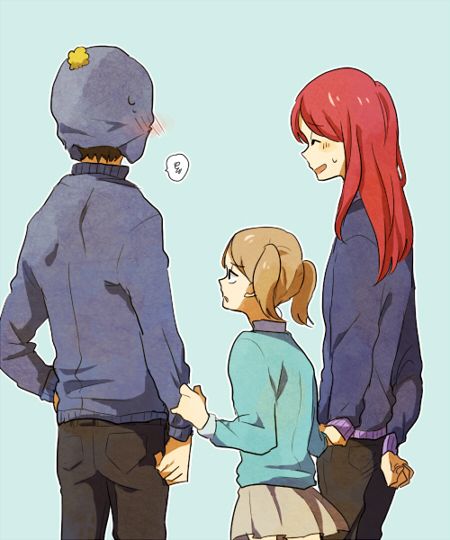
In 2019, the followers of the PAS concept, in order to promote it, persistently tried to lobby for the inclusion of this false syndrome (the existence of which has not been scientifically confirmed in any way) in the International Classification of Diseases -11 (ICD-11), which WHO plans to start introducing from 2023 As a result of this lobbying, the term PAS was included in the list of indexes for the ICD-11 search engine in 2019 (referring the reader for this index to the “caregiver-child relationship problem” category in chapter 24, which describes not diseases and injuries, but “ factors affecting health). At the same time, there was no description in this section of the actual PAS (PA) [23]. Nevertheless, given the authority of the WHO, it is obvious that even a mere mention of such an index in the ICD-11 search engine could be used by adherents of this pseudoscientific concept to advertise it about the alleged “scientific recognition” of PAS !)
Fortunately, under the influence of protest from many leading American and European scientific experts in the field of psychology and psychotherapy, pediatrics, law, etc. [6], the compilers of the ICD-11 changed their decision and removed the mention of PAS even only as an index in the ICD-11 search engine (which was reported in the spring of 2020) [24].
[6], the compilers of the ICD-11 changed their decision and removed the mention of PAS even only as an index in the ICD-11 search engine (which was reported in the spring of 2020) [24].
There have been previous attempts to include the "diagnosis" of PAS in the American classification of diseases DSM 5, but they also failed [14].
At present, in many foreign countries (including the USA), criticism and opposition to the PAS ideology from experts is growing. Especially a lot of material with a critical analysis of the PAS concept is collected in a recently published book:
Challenging Parental Alienation. New Directions for Professionals and Parents. Edited By Jean Mercer, Margaret Drew. Routledge, NY, 2022, 284 p.
(Challenging Parental Alienation. New Guidelines for Professionals and Parents. Edited by Jean Mercer and Margaret Drew).
The book is a collection of articles by leading experts in the US and several other countries in the field of child psychology, social services, child protection, law, etc.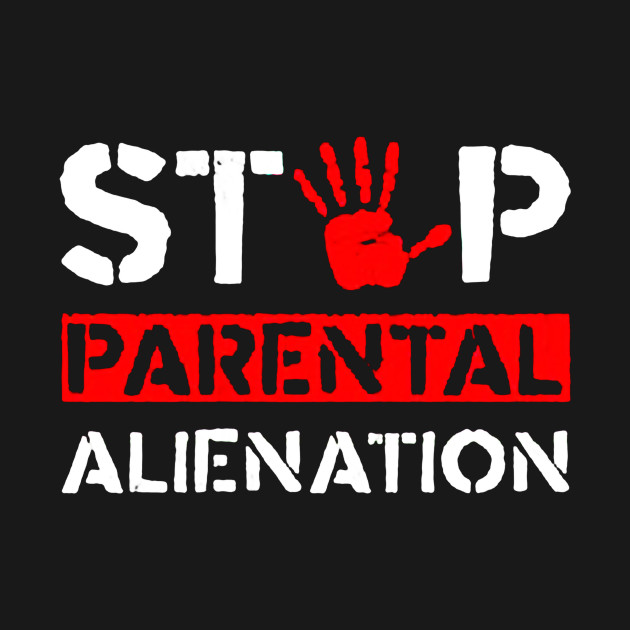 An overview of the contents of the chapters of the book can be seen here (in English): https://www.taylorfrancis.com/books/edit/10.4324/9781003095927/challenging-parental-alienation-jean-mercer-margaret-drew
An overview of the contents of the chapters of the book can be seen here (in English): https://www.taylorfrancis.com/books/edit/10.4324/9781003095927/challenging-parental-alienation-jean-mercer-margaret-drew
In a number of countries where the PAS ideology penetrated the courts a couple of decades ago, they have either already banned its use (example: Spain, [25]), or are at the stage of investigating judicial errors provoked by it, as in France [26]. One example is Brazil. In 2010, Brazil rushed to pass a family law law based on the PAS myths, without subjecting the issue to serious scientific analysis and ignoring objections from critics. And according to reports coming from Brazil, over the past 10 years, the negative effects of this law, which critics have warned about, have already fully manifested themselves. Things got to the point that in February 2022, the President of the National Board of Health made a recommendation not only to withdraw the law itself, but also to “cleanse” the system of Gardner’s legacy, as the country has seen a surge in violence against children over the past decade due to judicial errors committed under the influence of the ideas of PAS [27].
The syndrome of parental alienation was also negatively expressed in the UN [25], the Council of Europe and the European Parliament [28] and many international organizations for the protection of children from violence and cruelty [6].
Unfortunately, there are enthusiasts in Russia who are striving to impose this worthless product on our legal system and child psychology [29]. Language barriers allow lobbyists for the PAS concept to obscure information in Russia that criticizes these ideas and practices by foreign experts (, for example, it is falsely stated that in the West only “radical feminists” are against the ideas of PAS).
In conclusion, the following must also be said. Of course, divorce, the destruction of the family hurts all the participants, including children. But how can giving a child a false psychiatric "diagnosis" of PAS help in a difficult situation? And how can this add to the love of a child for a parent who participates in such an unjust deed? The same applies to the fears and suspicions generated by the PAS cult.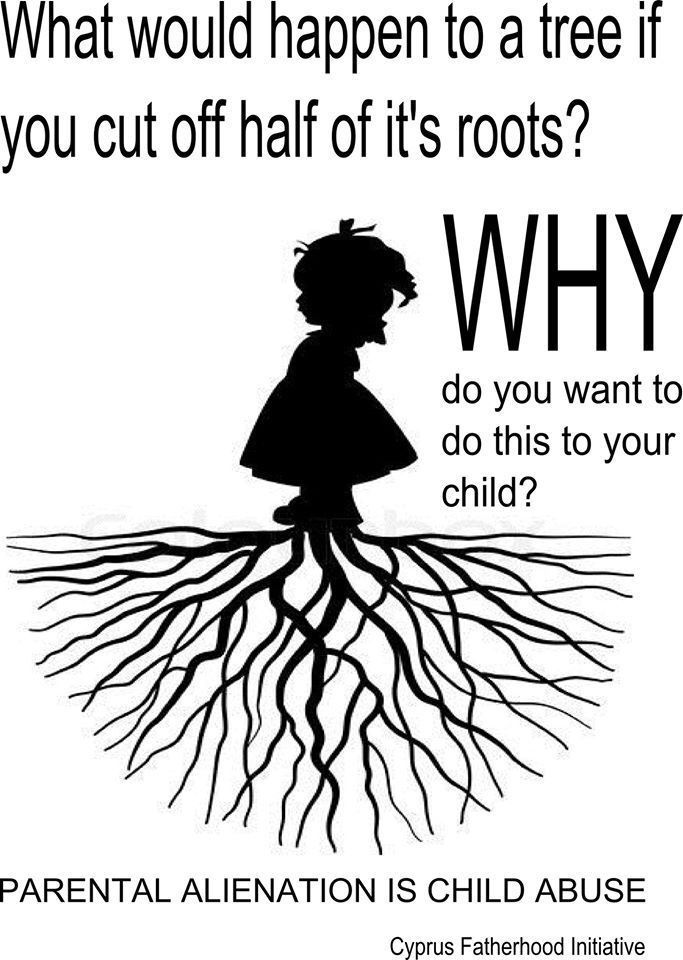 Maybe this will replenish the finances of some "experts" and "consultants" who speculate on PAS phobias (from among dubious psychologists and unscrupulous lawyers), but this will not bring any benefit to parents in conflict and their children. Not to mention such tragedies, when, as a result of bad decisions made in courts under the influence of pseudo-scientific ideas of PAS, children were torn from their beloved mother (in some cases, their father) and sent to the perpetrator of domestic violence and cruelty (endangering health and even life). children).
Maybe this will replenish the finances of some "experts" and "consultants" who speculate on PAS phobias (from among dubious psychologists and unscrupulous lawyers), but this will not bring any benefit to parents in conflict and their children. Not to mention such tragedies, when, as a result of bad decisions made in courts under the influence of pseudo-scientific ideas of PAS, children were torn from their beloved mother (in some cases, their father) and sent to the perpetrator of domestic violence and cruelty (endangering health and even life). children).
At the same time, “cult-PAS” deprives all participants in the drama (both adults and children) of receiving qualified and safe psychotherapeutic assistance, including those aimed at correcting their behavior by adults in order to reduce the harm caused by divorce to children [30 , 31].
I would like to hope that the lobbying of the concept of PAS, picked up on the dumps of pseudoscientific psychology and psychotherapy, will still receive an adequate critical assessment of experts in Russia.
REFERENCES
1. Teoh J., Chng G. S., Chu C. M. (2018). Parental Alienation Syndrome: Is it true? Singapore Academy of Law Journal, 30(SE), 727–755. 2 M. S. Pignotti (2014). parental alienation diagnosis. A modern and effective subtype of domestic violence, endemic in Italian courts. Italian Journal of Pediatrics , 40 (Suppl 1), A34. https://www.researchgate.net/publication/270440267_Parental_alienation_diagnosis_A_modern_and_effective_subtype_of_domestic_violence_endemic_in_Italian_courts
3. Silberg J. and Dallam S. Abusers gaining custody in family courts: A case series of over turned decisions. Journal of Child Custody. Applying Research to Parenting and Assessment Practices and Policies. volume. 2019. 16 (2), pp. 149 – 169. https://doi.org/10.1080/15379418.2019.1613204 See full text here: https://www.researchgate.net/publication/334184509_Abusers_gaining_custody_in_family_courts_A_case_series_of_over_turned_decisions
4. Pepiton M.B., Alvis L.J.? Not According to Scientific Evidence. A Review of Parental Alienation, DSM-5 and ICD-11 by William Bernet, Journal of Child Sexual Abuse. 2012. 21:2, 244-253. https://www.tandfonline.com/doi/abs/10.1080/10538712.2011.628272
Pepiton M.B., Alvis L.J.? Not According to Scientific Evidence. A Review of Parental Alienation, DSM-5 and ICD-11 by William Bernet, Journal of Child Sexual Abuse. 2012. 21:2, 244-253. https://www.tandfonline.com/doi/abs/10.1080/10538712.2011.628272
5. Meier, J. Parental Alienation Syndrome and Parental Alienation: A Research Review. Harrisburg, PA: VAWnet, a project of the National Resource Center on Domestic Violence. 2013, September. https://www.courts.ca.gov/documents/BTB25-PreConDV-11.pdf
6. Collective Memo of Concern to: World Health Organization about "Parental Alienation". 2019. http://www.learningtoendabuse.ca/collective-memo-of-concern-to-WHO-about-parental-alienation.html
7. Mercer J. Parental Alienation and Recovered Memory: Some Parallels. ChildMyth.blogspot.com. Febr., 28. 2019. http://childmyths.blogspot.com/2019/02/parental-alienation-and-recovered.html
8. Mercer J. Are Parental Alienation Organizations Cult-like in Nature? ChildMyth. blogspot.com. August, 16. 2018. http://childmyths.blogspot.com/2018/08/are-parental-alienation-organizations.html
blogspot.com. August, 16. 2018. http://childmyths.blogspot.com/2018/08/are-parental-alienation-organizations.html
Parental Alienation Disorder: Why Label Children with a Mental Diagnosis? Journal of Child Custody. 2010. 7, 266 - 286. https://www.tandfonline.com/doi/full/10.1080/15379418.2010.521041
10. Mercer J. Interesting Times in the Parental Alienation World. ChildMyth.blogspot.com. April, 12. 2018. https://childmyths.blogspot.com/2018/04/interesting-times-in-parental.html
11. Tabachnick C. They were taken from their mom to rebond with their dad. It didn't go well. Washington Post. May 11. 2017. https://www.washingtonpost.com/lifestyle/magazine/a-divorced-father-his-estranged-kids-and-a-controversial-program-to-bring-them-together/2017/05/09/b50ac6f6-204c-11e7-ad74-3a742a6e93a7_story.html
12. Mercer J. Examining Parental Alienation Treatments: Problems of Principles and Practices. Child and Adolescent Social Work Journal. 2019. 36(6). DOI: 10.1007/s10560-019-00625-8 Full text. see here : https://www.researchgate.net/publication/333588450_Examining_Parental_Alienation_Treatments_Problems_of_Principles_and_Practices
2019. 36(6). DOI: 10.1007/s10560-019-00625-8 Full text. see here : https://www.researchgate.net/publication/333588450_Examining_Parental_Alienation_Treatments_Problems_of_Principles_and_Practices
13. Baker J. The Strange Advocacy for “Parental Alienation Syndrome”. A perfect tool for harming children. 2015. https://www.psychologytoday.com/us/blog/the-love-wisdom/201512/the-strange-advocacy-parental-alienation-syndrome
14. Myers J.E.B. and Mercer J. "Parental Alienation in Family Court: Attacking Expert Testimony". Child and Family Law Journal. 2022 Vol. 10: Iss. 1, article 3. https://lawpublications.barry.edu/cgi/viewcontent.cgi?article=1057&context=cflj
15. Overview of Dr. Richard Gardner's Opinions on Pedophilia and Child Sexual Abuse. http://www.leadershipcouncil.org/1/pas/RAG.html
16.Family Court Crisis: Our Children at Risk Film. https://centerforjudicialexcellence.org/multimedia/family-court-crisis-our-children-at-risk-film/
17. APSAC announces revisions to its definitions of psychological maltreatment. 2019. https://www.apsac.org/single-post/2019/08/16/apsac-announces-revisions-to-its-definitions-of-psychological-maltreatment-and-adds-a-cau
APSAC announces revisions to its definitions of psychological maltreatment. 2019. https://www.apsac.org/single-post/2019/08/16/apsac-announces-revisions-to-its-definitions-of-psychological-maltreatment-and-adds-a-cau
18 Katz A., Junk Science v. Novel Scientific Evidence: Parental Alienation Syndrome, Getting It Wrong in Custody Cases, 24 Pace L. Rev. 239 (2003). https://digitalcommons.pace.edu/plr/vol24/iss1/10
19. Mercer J. Child Custody: Admit Your Wrong-doing, and/or Don't See Your Kids. 2013. https://childmyths.blogspot.com/2013/11/child-custody-admit-your-wrong-doing.html
20. Mercer J. Closing Argument in a Child Custody Case Involving Accusations of Parental Alienation. 2018. https://childmyths.blogspot.com/2018/12/closing-argument-in-child-custody-case.html
2018. http://childmyths.blogspot.com/2018/10/what-bowlby-really-said-or-more-fun.html
22. Kelly J.B., Johnston J.R. The alienated child: A reformulation of parental alienation syndrome. Family Court Review. 2001 Vol. 39(3). P. 249–266 . https://www.researchgate.net/publication/227680682_The_alienated_child_A_reformulation_of_Parental_Alienation_Syndrome
Family Court Review. 2001 Vol. 39(3). P. 249–266 . https://www.researchgate.net/publication/227680682_The_alienated_child_A_reformulation_of_Parental_Alienation_Syndrome
23. Mercer J. Why Parental Alienation Should Not Be Indexed in ICD-11: Caveat Woozles. ChildMyth.blogspot.com. October, 28. 2019. http://childmyths.blogspot.com/2019/10/why-parental-alienation-should-not-be.html
24. Mercer J. ICD-11 Rejects "Parental Alienation". ChildMyth.blogspot.com . March, 11. 2020. https://childmyths.blogspot.com/2020/03/icd-11-rejects-parental-alienation.html
25. Spanish courts must protect children from domestic violence and sexual abuse, say UN experts. 9 December, 2021. https://www.ohchr.org/en/press-releases/2022/01/spanish-courts-must-protect-children-domestic-violence-and-sexual-abuse-say
26. Inceste: proteger les enfants. A propos des meres en lutte. Avis du 27 October 2021. https://www.ciivise.fr/les-travaux-avis/avis
27.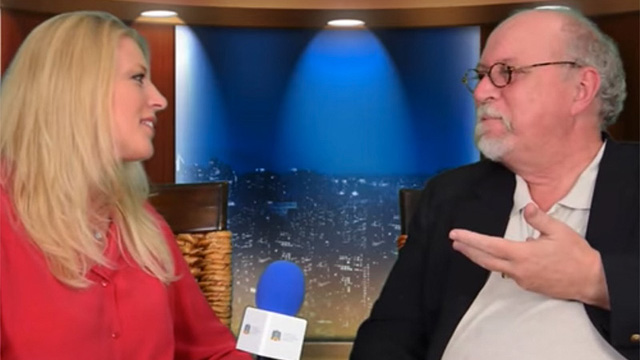 Fernano Zasso Piggato. Presidente do Conselho Nacional de Saude. RECOMENDAÇÃO Nº 003, DE 11 DE FEVEREIRO DE 2022 http://conselho.saude.gov.br/recomendacoes-cns/2337-recomendacao-n-003-de-11-de-fevereiro-de-2022 ( Russian translation see here : https://yuliamass.livejournal.com/2.html).
Fernano Zasso Piggato. Presidente do Conselho Nacional de Saude. RECOMENDAÇÃO Nº 003, DE 11 DE FEVEREIRO DE 2022 http://conselho.saude.gov.br/recomendacoes-cns/2337-recomendacao-n-003-de-11-de-fevereiro-de-2022 ( Russian translation see here : https://yuliamass.livejournal.com/2.html).
28. European Parliament resolution of 6 October 2021 on the impact of intimate partner violence and custody rights on women and children (2019/2166(INI)). https://www.europarl.europa.eu/doceo/document/TA-9-2021-0406_EN.html
29. Johnston J.R. Children of Divorce Who Reject a Parent and Refuse Visitation: Recent Research and Social Policy Implications for the Alienated Child. Family Law Quarterly, 2005. Vol. 38, no. 4, pp. 757-775. http://parentalalienationresearch.com/PDF/2005johnston.pdf
30. Clemente M., Padilla-Racero D. Facts speak louder than words: Science versus the pseudoscience of PAS. Children and Youth Services Review, 2015. 56. 10.1016/j.childyouth.2015.07.005. https://www.researchgate.net/publication/282632448_Facts_speak_louder_than_words_Science_versus_the_pseudoscience_of_PAS
56. 10.1016/j.childyouth.2015.07.005. https://www.researchgate.net/publication/282632448_Facts_speak_louder_than_words_Science_versus_the_pseudoscience_of_PAS
31. Massino Yu.S. Pseudoscience in child psychology on the march: about the "day of the fight against parental alienation". 2022. https://yuliamass.livejournal.com/291414.html
Triangulation (psychology)
Triangulation is a manipulation tactic in which one person will not communicate directly with another person, instead using a third person to relay a message to a second person, thus forming a triangle. It also refers to a form of splitting in which one person manipulates the relationship between two parties by controlling the connection between them.
Triangulation can manifest as a manipulative device to create a rivalry between two people, known as divide and conquer 971 by the Swiss psychiatrist Dr. Ernest L. Abelin, especially as an "early triangulation", to describe the transitions in the theory of psychoanalytic object relations and the relationship between parents and children at the age of 18 months. In this presentation, the mother is the first caregiver with an almost "symbiotic" relationship with the child, and the father lures the child into the outside world, causing the father to become a third party. [3] Abelin later developed the "organizational and triangulation model", [4] in which he based all human mental and psychic development on several stages of triangulation.
In this presentation, the mother is the first caregiver with an almost "symbiotic" relationship with the child, and the father lures the child into the outside world, causing the father to become a third party. [3] Abelin later developed the "organizational and triangulation model", [4] in which he based all human mental and psychic development on several stages of triangulation.
Some of the earlier related work published in the 1951 article was done by a German psychoanalyst. Hans Löwald in Pre-Oedipal Behavior and Dynamics. [5] In a 1978 article, child psychoanalyst Dr. Selma Kramer wrote that Löwald postulated the father's role as a positive supportive force for the preoedipal child against the mother's threat of reintegration, which leads to early identification with the father. antecedent to the classical Oedipus complex. [6] This was also related to the work in Separation-Individuation Theory of Child Development by the psychoanalyst Margaret Mahler.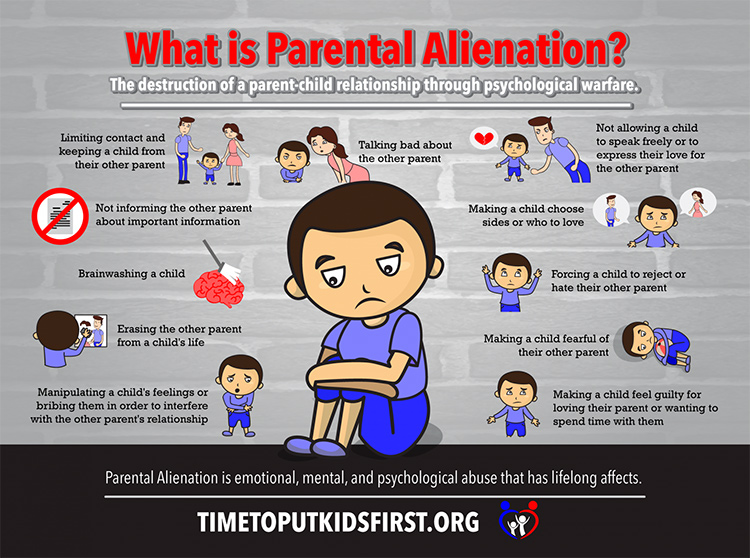 [6] [7] [8]
[6] [7] [8]
Narcissism
In the context of narcissism, triangulation occurs when the narcissist attempts to control the flow, interpretation, and nuances of communication between two separate actors or groups of actors. Providing communication and constant feedback to the narcissist provides a sense of worth. Common scenarios include a parent attempting to control communication between two children, or an emotionally abusive partner attempting to control communication between the other partner and their friends and family. The narcissistic person wants other actors to communicate through him, but otherwise remains isolated. In some cases, narcissists use control over communication to drive a wedge between other parties. This can be done by falsely scapegoating one of the actors or their groups for issues for which the narcissist is actually responsible or otherwise unrelated. In addition, the narcissist may mistakenly believe that another actor said or thought something hurtful, or may overemphasize an aspect of what they said that ignores the larger context.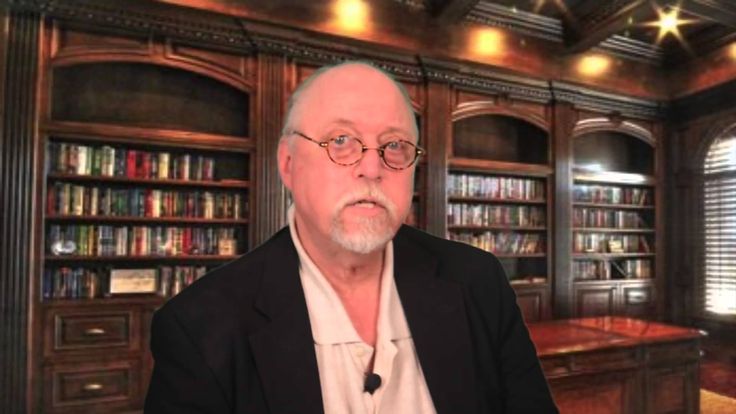 [9]
[9]
Alternatively, the narcissist may try to use triangulation to place a third actor between themselves and whoever they are normally in conflict with. Instead of directly communicating with the actor they are in conflict with, the narcissist will send messages in support of their cause through a third actor in an attempt to make the communication more authentic. [10]
Family
In family therapy, the term triangulation is most closely associated with the work of Murray Bowen. Bowen suggested that the two-person emotional system is unstable, because under stress it turns into a three-person system or a triangle. [11]
In a family triangulation system, a third party may be used either in place of direct communication, or may be used as a messenger to convey a message to the main party. Usually such communication is an expressed dissatisfaction with the main party. For example, in a dysfunctional family in which there is alcoholism Currently, the non-drinking parent will go to the child and express dissatisfaction with the drinking parent. This includes the child in discussions about how to deal with the problem of alcoholic parents. Sometimes a child may enter into a relationship with a parent, playing the role of a third party and thus "triangulates" in the relationship. Alternatively, the child may go to the alcoholic parent, relaying to him what he was told. In cases where this occurs, the child may be forced to play the role of a "surrogate spouse". The reason this happens is because both sides are dysfunctional. Instead of communicating directly with each other, they use a third party. Sometimes this is because it is not safe to go directly to the person and discuss their problems, especially if they are alcoholic and/or abusive.
This includes the child in discussions about how to deal with the problem of alcoholic parents. Sometimes a child may enter into a relationship with a parent, playing the role of a third party and thus "triangulates" in the relationship. Alternatively, the child may go to the alcoholic parent, relaying to him what he was told. In cases where this occurs, the child may be forced to play the role of a "surrogate spouse". The reason this happens is because both sides are dysfunctional. Instead of communicating directly with each other, they use a third party. Sometimes this is because it is not safe to go directly to the person and discuss their problems, especially if they are alcoholic and/or abusive.
In a triangular family relationship, two who come together run the risk of forming an entangled relationship. [12]
Perverted triangle
Perverted triangle was first described by Jay Haley in 1977. [13] as a triangle in which two people who are at different levels of the hierarchy or generations form a coalition against a third person (for example, "a hidden alliance between a parent and a child who unite to undermine the power and authority of the other parent".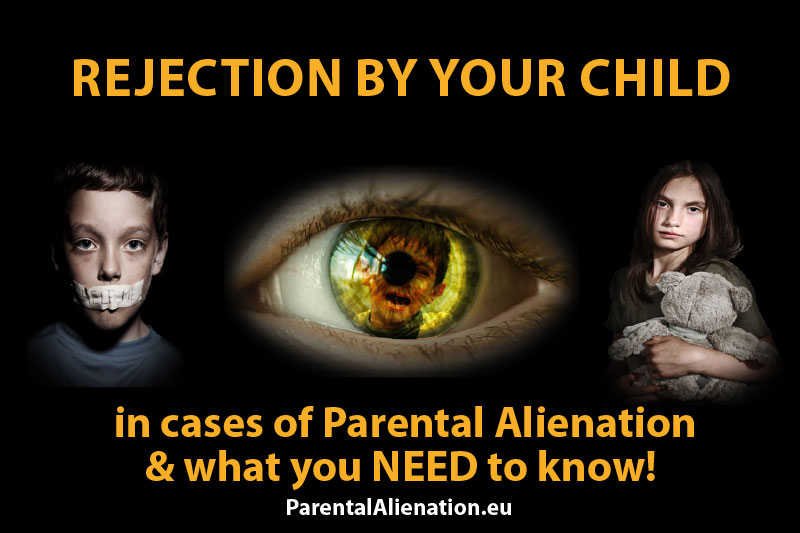 [14] ) The concept of a perverted triangle has been widely discussed in the professional literature. [15] [16] [17] [18] [19] [20] [21] hard triangle. [22]
[14] ) The concept of a perverted triangle has been widely discussed in the professional literature. [15] [16] [17] [18] [19] [20] [21] hard triangle. [22]
Cross-generational coalition
For example, a parent and child may team up with another parent, but not acknowledge it, to form an intergenerational coalition. 9 Mahler, Margaret S. (1963). "Thoughts on development and individualization". Psychoanalytic study of the child . 18 : 307–324. Doi: 10.1080/00797308.1963.11822933. PMID 14147283. CS1 maint: ref=harv (link)
- Abstract also printed as : Mahler, Margaret S. (1975), '334. MAHLER, MARGARET SCHOENBERGER. Thoughts on development and individualization. 18: 307-324, 1963", in Eissler, Ruth S. (ed.), The Psychoanalytic Study of the Child, Volumes 1-25: Extracts and Index 9 Kerig, Patricia (October 2005).
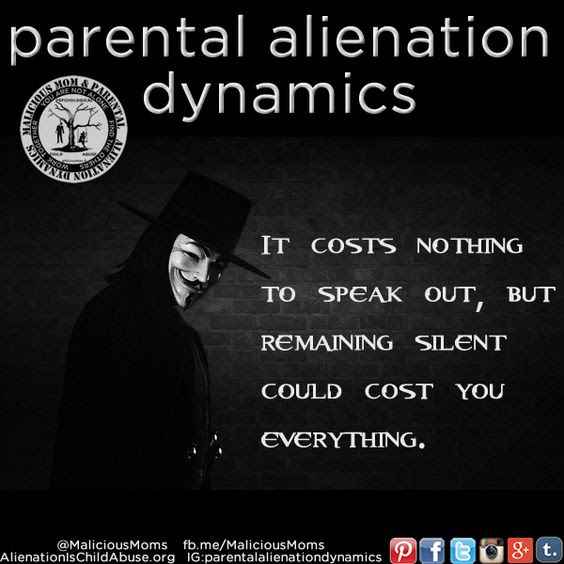
Learn more
